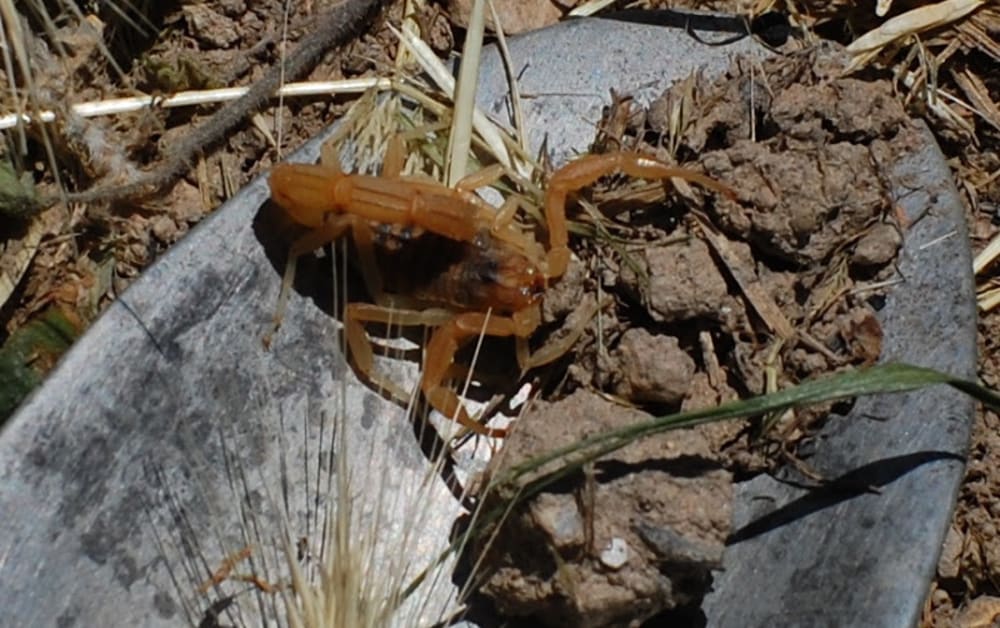Early Nature Related Posts, Andalucia
These are some old Nature related posts that I found that record a fraction of the large variety of species here in Andalucia

These are some old Nature related posts that I found that record a fraction of the large variety of species here in Andalucia
Contents & original posting date
- Snakes in the garden!, 2008-06-06
- Parnassius Apollo - To you and me a butterfly, 2008-06-11
- Butterfly, 2008-06-26
- Moorish Gecko, 2008-06-27
- Egyptian Grasshopper, 2008-08-13
- Tiger moth, 2008-09-29
- Look what I found in the swimming pool! 2008-11-28
- The trouble with Pine Processionary Caterpillars, 2009-03-21
- Scolopendra - Escolopendra, 2009-04-18
- Lizard - Large Psammodromus, 2009-05-12
- Nosed grasshopper - Acrida Hungarica, 2009-05-30
- Opium Poppy - Papaver somnifera, 2009-05-30
- Moths - striped hawkmoth, small blood vein, purple marbled & leopard moth, 2009-05-30
- Bee Eaters, 2009-09-08
- Dragonfly - Southern Hawker (Aeshna cyanea), 2009-09-27
- Spider - Araneus diadematus, 2009-12-13
- Scorpion! - Buthus occitanus or Buthus ibericus, 2010-06-06
- Thread-waisted Wasp (Sceliphron spirifex), 2010-08-08
- White-throated Caracara in Patagonia, 2011-01-19
- An incredible encounter with Golden Eagles, 2012-02-23
- On the trail of the Quebrantahuesos!, 2012-10-06
- The day I met an Ocellated Lizard, 2013-05-09
- The red palm weevil (Rhynchophorus ferrugineus), 2013-11-08
- Macro - Wasp, 2015-02-14
- Macro - February wild flowers, 2015-02-23
- What night time visitors do we get in the garden?, 2015-04-09
Snakes in the garden!, 2008-06-06
Just found the husky Khumbu playing "dare" with this little creature in the back garden! About 1.5ft in length but didnt try to unravel it to find out! Gave a big hiss at me when I went to investigate. I've since found out it's called a "Ladder Snake" or to give it it's spanish/latin name ........ "culebra de escalera". It is called this because of the ladder markings down it's back. Non-venemous but scary!
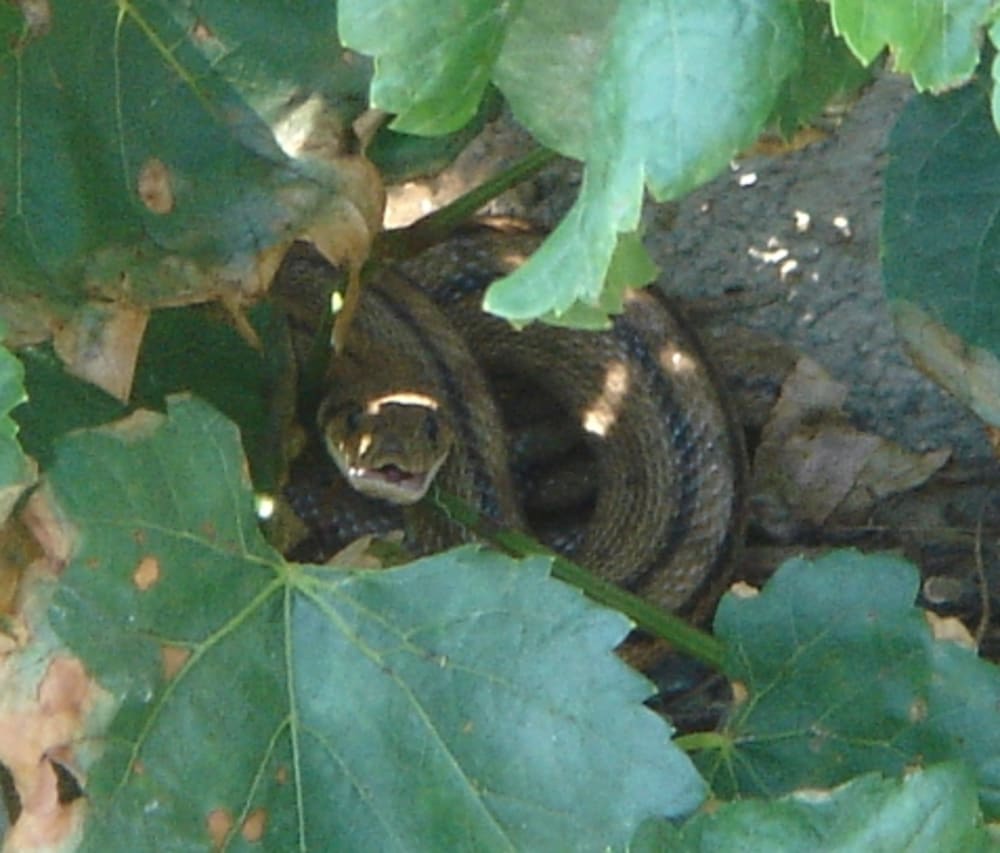
Parnassius Apollo - To you and me a butterfly, 2008-06-11
Whilst going up Mulhacen the other day I saw this little fellow crawling by, so took a picture of him and when I got back I posted the picture on a web forum I use to help identify all things nature to Spain. Turns out its a rare butterfly and very much protected (glad I didnt tread on it) and is endemic to the Sierra Nevada. It is a Parnassius Apollo butterfly.
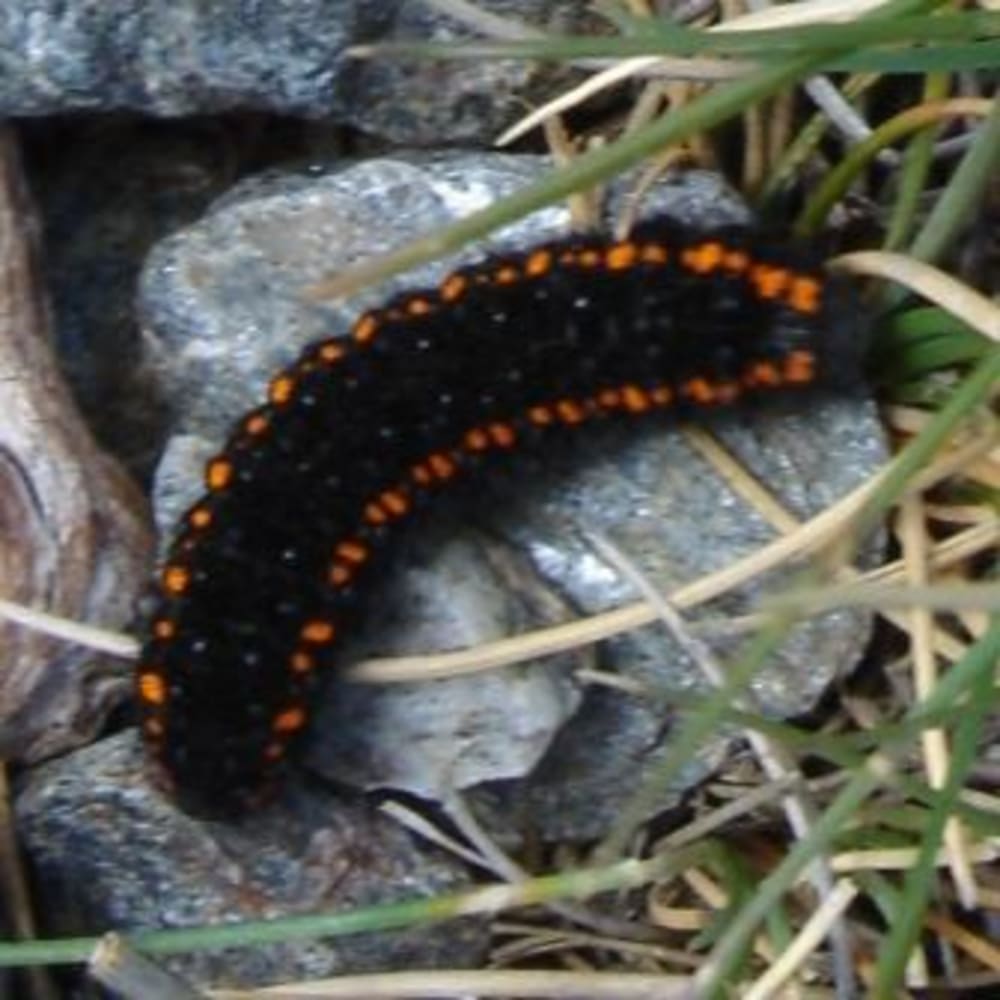
Butterfly, 2008-06-26
Found this butterfly whilst out with clients of Spanish Highs walking in the Poqueira Gorge on Sunday, turns out its either a Silver Studded Blue or an Idas Blue!! Only one way to tell the difference and that is by a looking at its ankle with a magnifying glass, hmmmm. The Idas Blue has a limited distribution in Southern Spain but is found in the Sierra Nevada. I use a site called Iberian Nature Forum to help me identify things here in Spain, there are lots of very knowledgeable people on there.

Moorish Gecko, 2008-06-27
This little fellow lives in our bathroom and helps to keep the flys down. Aparently he is a Moorish Gecko. He lost part of his tail a few months ago but as you can see its grown back now.

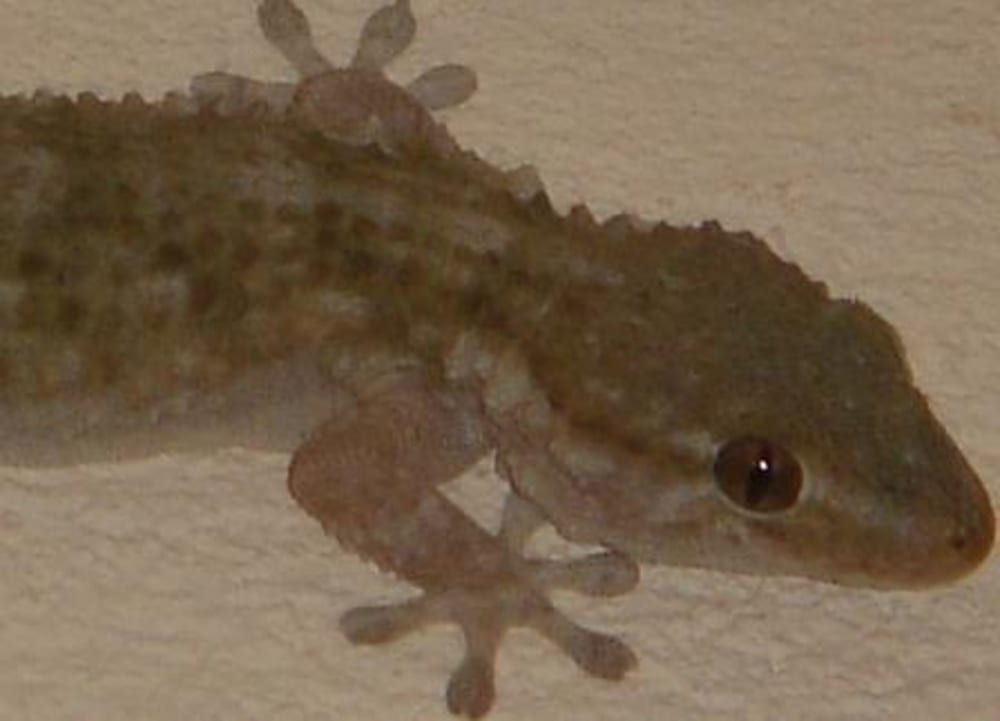
Egyptian Grasshopper, 2008-08-13
We had a visit by this little chap the other day. He is a young Egyptian Grasshopper. Apparently they do little damage which is a good job for our veggies and for the Grasshopper I guess. He was a little camera shy and kept turning away from the camera so we couldnt get his face.
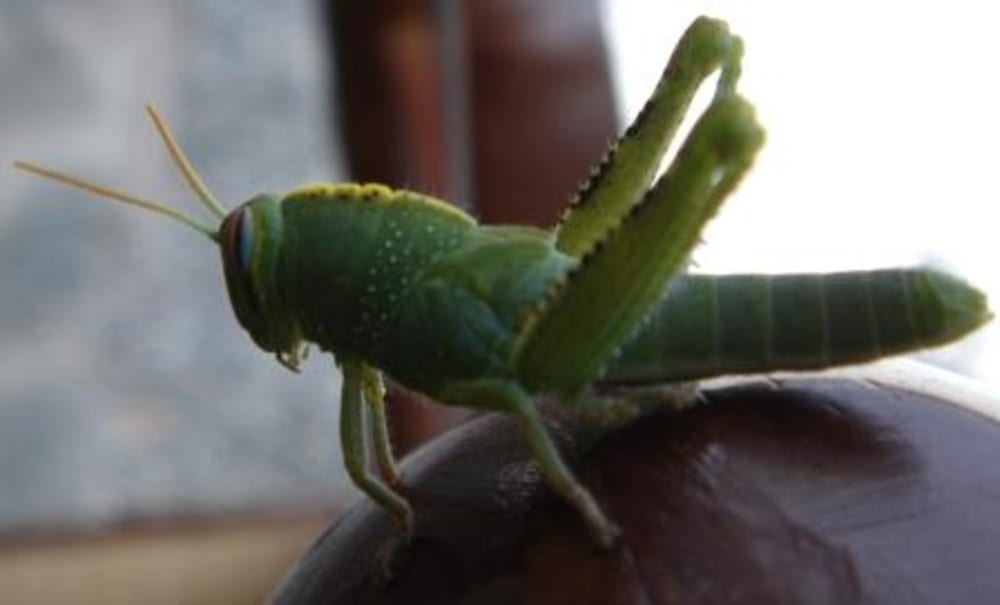
Tiger moth, 2008-09-29
This little fella came to visit us last night, he was quite friendly and even posed for a couple of photos. Obviously we had no idea what sort of moth it was so I posted his picture on Iberian Nature Forum and the very helpful and knowlegeable people on their identified him for me. No idea what its function is in life but who cares when it looks like it does.
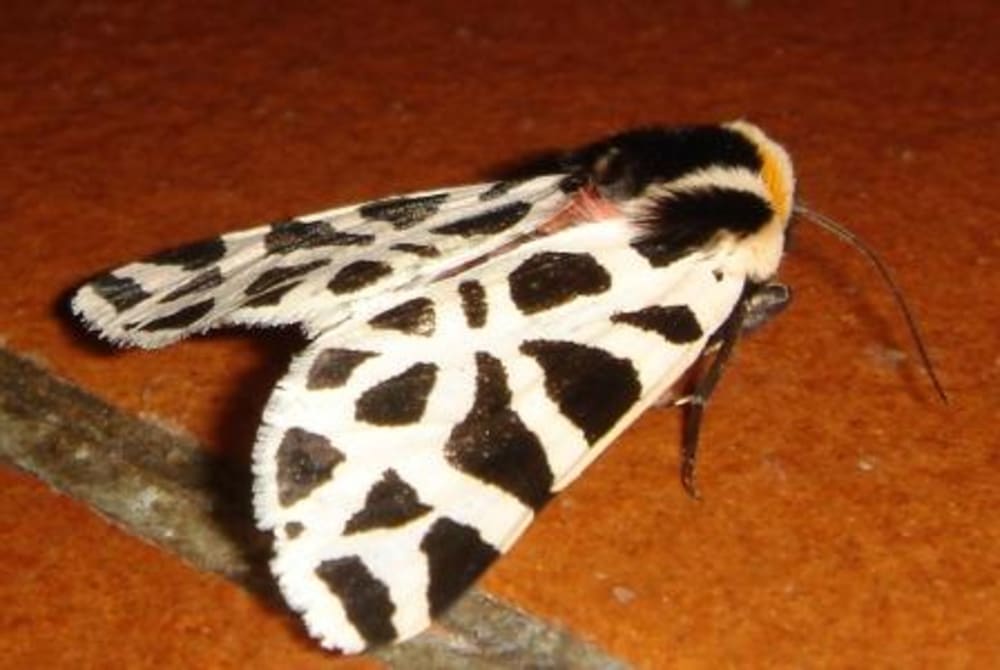
Look what I found in the swimming pool! 2008-11-28
Found this little chap in the swimming pool on Monday, luckily for him a big plastic bag had blown in so he wasn't completely submerged. I fished him out, put him in a rocky area in the sun so he could dry out, warm up and slither off, which he did. Turns out he is a Horseshoe Whipsnake, non venenmous, just a fast mover and a good mouser, which is a good job as the dogs and cat are pretty useless at the job around here.

Comments
peejay: A handsome snake. I really envy you seeing all these wonderful creepy crawlies.
The trouble with Pine Processionary Caterpillars, 2009-03-21
Whilst the others were skiing down to the Loma de Dilar from the Sierra Nevada ski centre I had a fantastic drive through the Cumbres Verdes in stunning scenery and started my walk up to meet them from the Cortijuela.
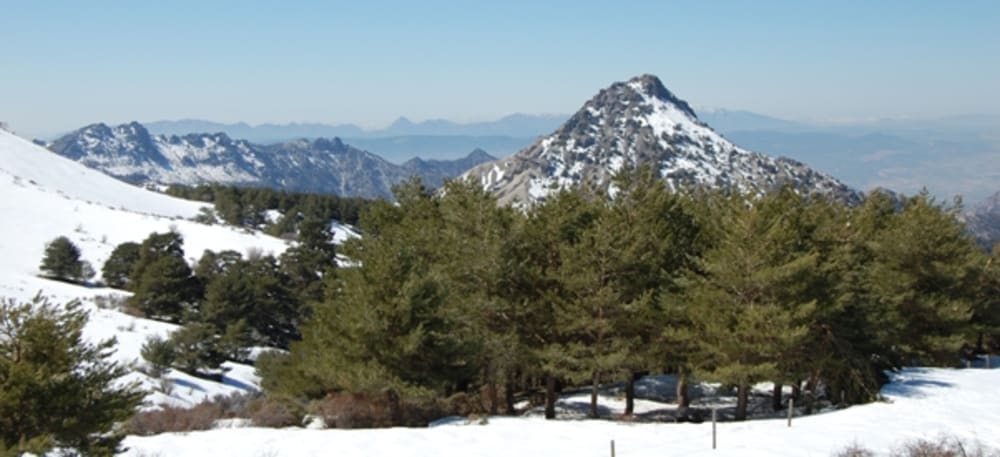
Trevenque and the Los Alayos de Dilar ridge
I was on my own without the dogs for a change, which enabled me to get to see some wildlife before it got frightened off by the dogs. I walked up through a pine forest with a stream running through it and plenty of melting snow. I saw lots of birds but im afraid I dont know what they were, I also saw 2 Red Squirrels, one who sat on branch but I couldnt get the lense cap off the camera quick enough so missed out on that photo. Along the track up I came across many lines of Pine Processionary Caterpillars so I was glad I didnt have the dogs with me.
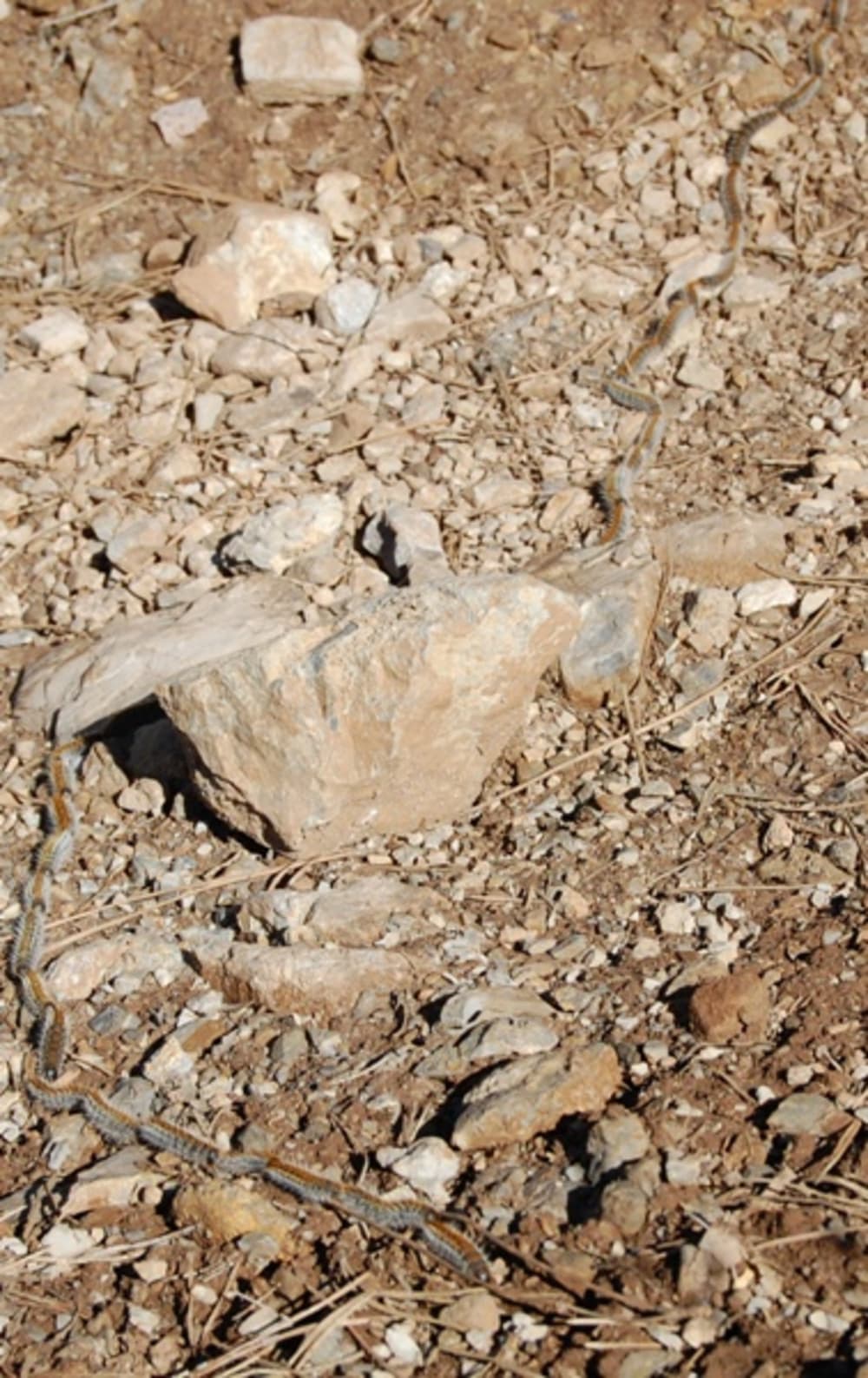
Pine Processionary Caterpillars
These harmless looking caterpillars (which turn into moths) can be very dangerous to pets (mainly dogs as they are inquisitive) and some humans. When disturbed they shed their fine hairs which irritate our skin causing very itchy rashes, if the hairs get into the eye, nose or throat area, then im sure you can work out the trouble you may get into. Even just sitting under a tree with the nests in can cause you to get a rash. Children have been known to go temporarily blind from rubbing their eyes after picking them up and many dogs have lost their lives or part of their tongue!
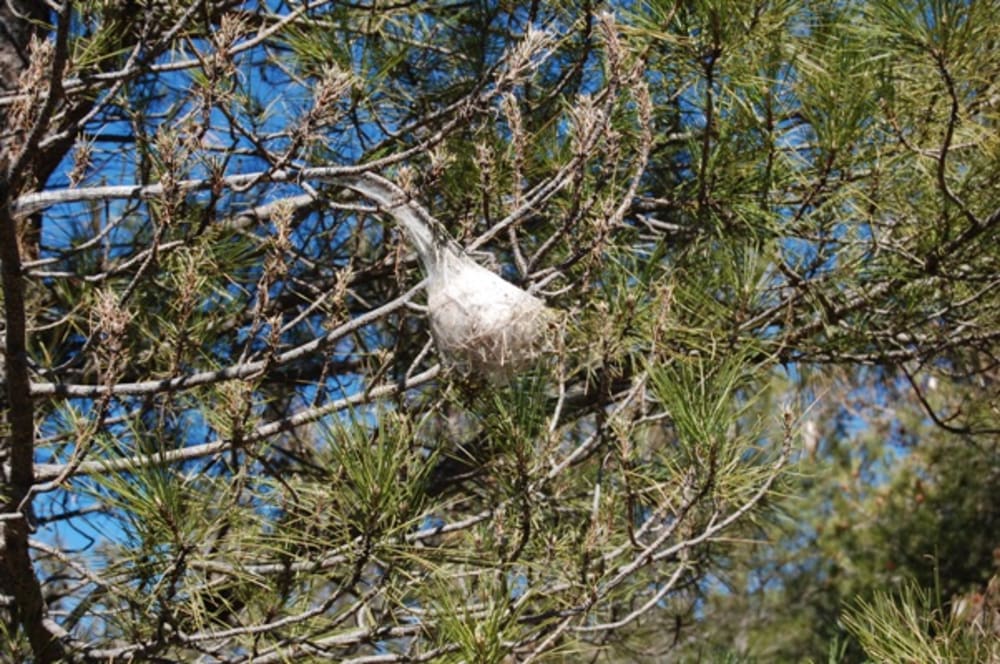
Pine Processionary Caterpillar nest
They are a big problem in Spain and are devastating forests because they make many nests in one tree and eventually kill it, it seems to be a big problem in this area. These next few photos show you the devastation in just a few trees, let alone the forest. There is alot of information on the internet about these little critters.
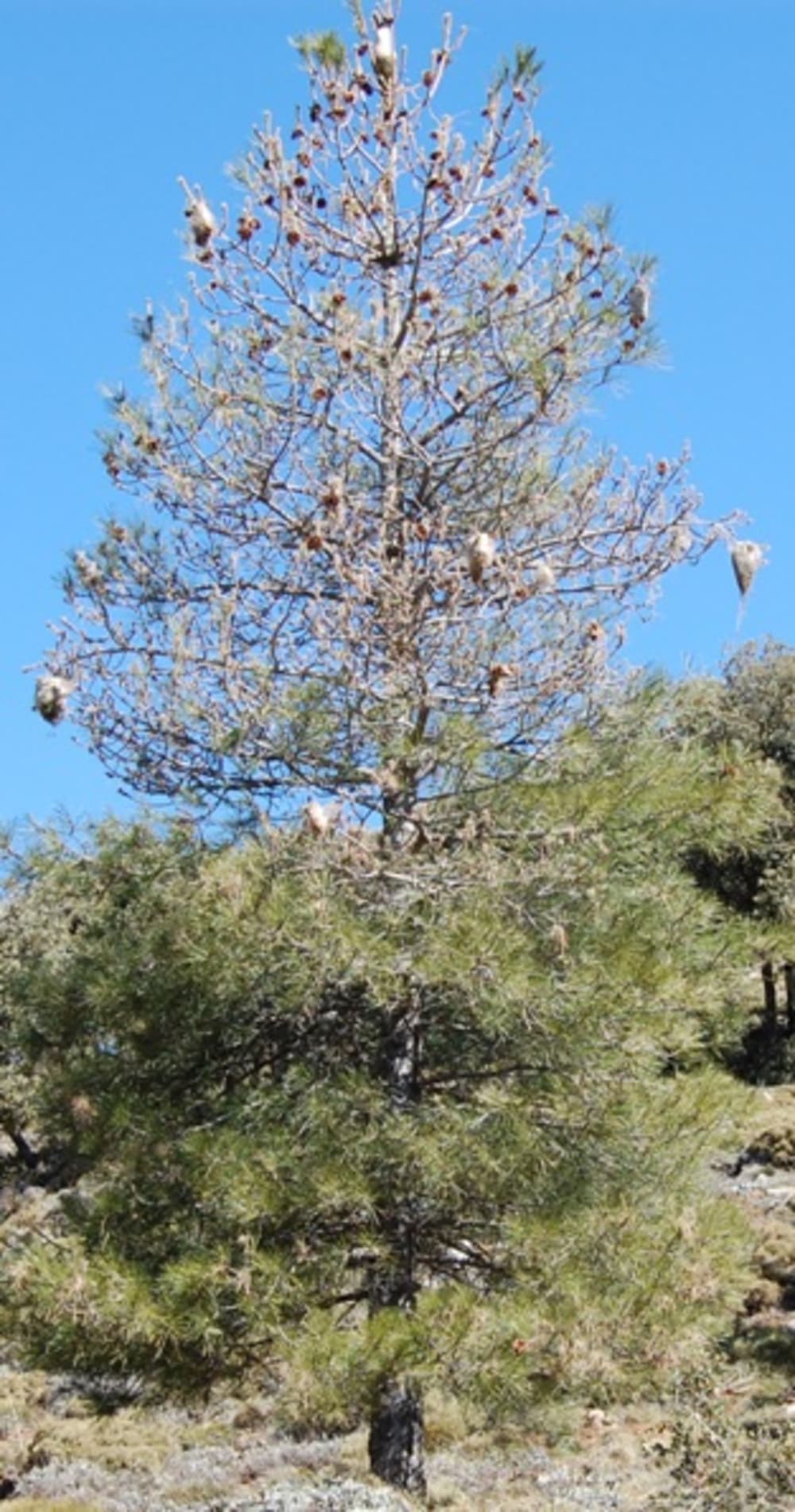
A nearly dead pine tree with many pine processionary caterpillar nests
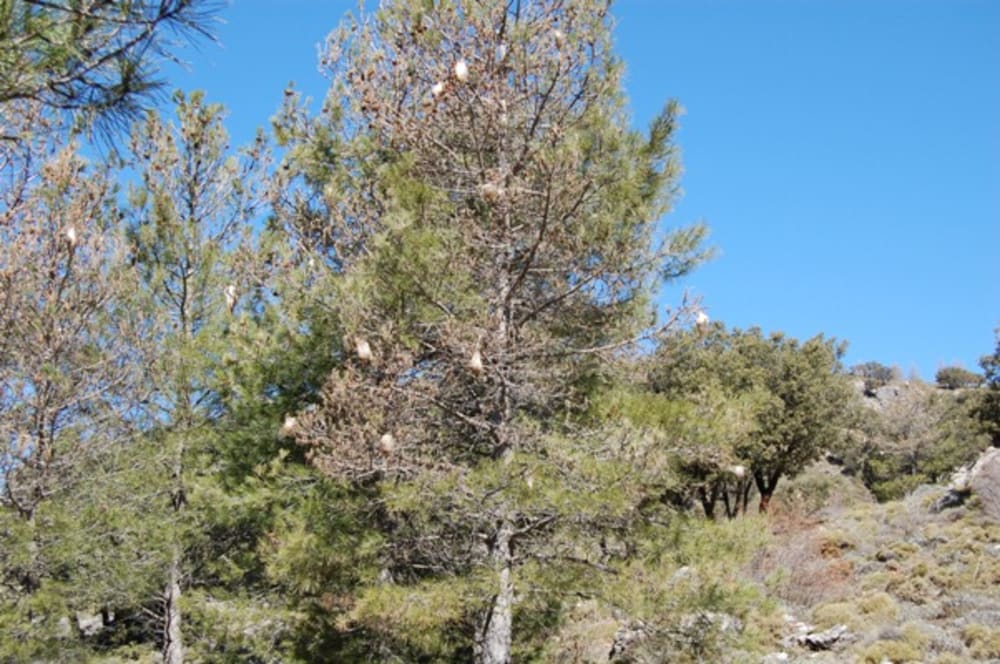
Pine processionary caterpillar nests in trees
So after pottering my way up, taking many useless photos, the skiers eventrually showed up in the far distance, so I sat down and started taking more photos, but this time of them who were very surprised to see that I had found them in the middle of know where.
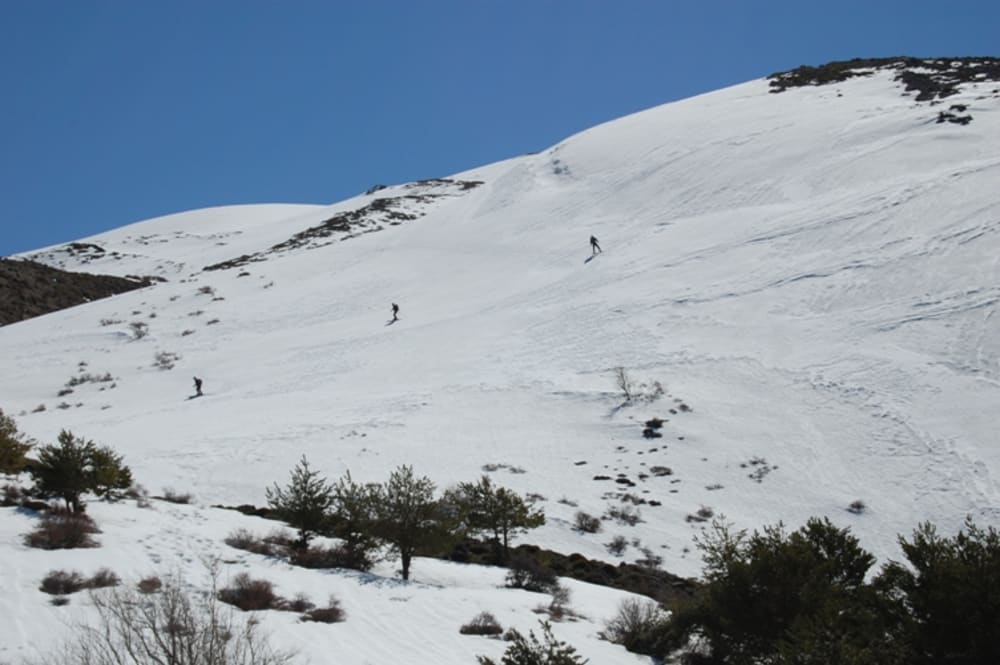
The 3 ski tourers making their way down to me
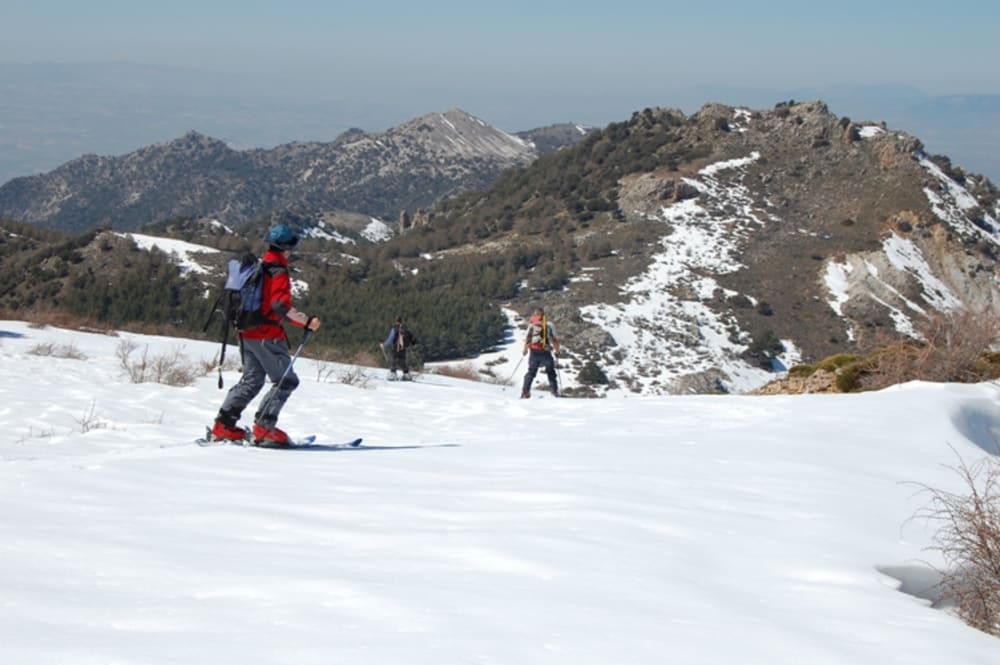
Determined to ski as far as possible towards the forest
Comments
Graham: Who`d have thought something so harmless looking as those caterpillars could cause so much harm to humans and animals.
Scolopendra - Escolopendra, 2009-04-18
This is one of the creepy crawlies that we live with here in Andalucia. In English it is known as a Scolopendra, in Spanish its an Escolopendra. I think this one is a Megarian Banded Centipede. I walked past the swimming pool and saw this chap floating so took advantage of the fact it was dead and took a few photos, as you can see its 11cm long and pretty nasty looking. They can move very fast and have a nasty sting which can cause a very painful swelling, hence the photo only being taken as it was dead.
I have found Khumbu playing with these, now he did end up once having to have an emergency trip to the vet for a swollen tongue and face but we don't know if it was one of these that caused it. We have found them in our bedroom and even in our bed!!!! Just a couple of weeks ago one just walked on past whilst I was sat on the sofa. There is a big market for these on the internet for collectors of these centipede's, maybe I shall have to get brave and start collecting and selling them to earn a bit of money? I couldn't decide which was the best photo to publish so I put all 3 on.
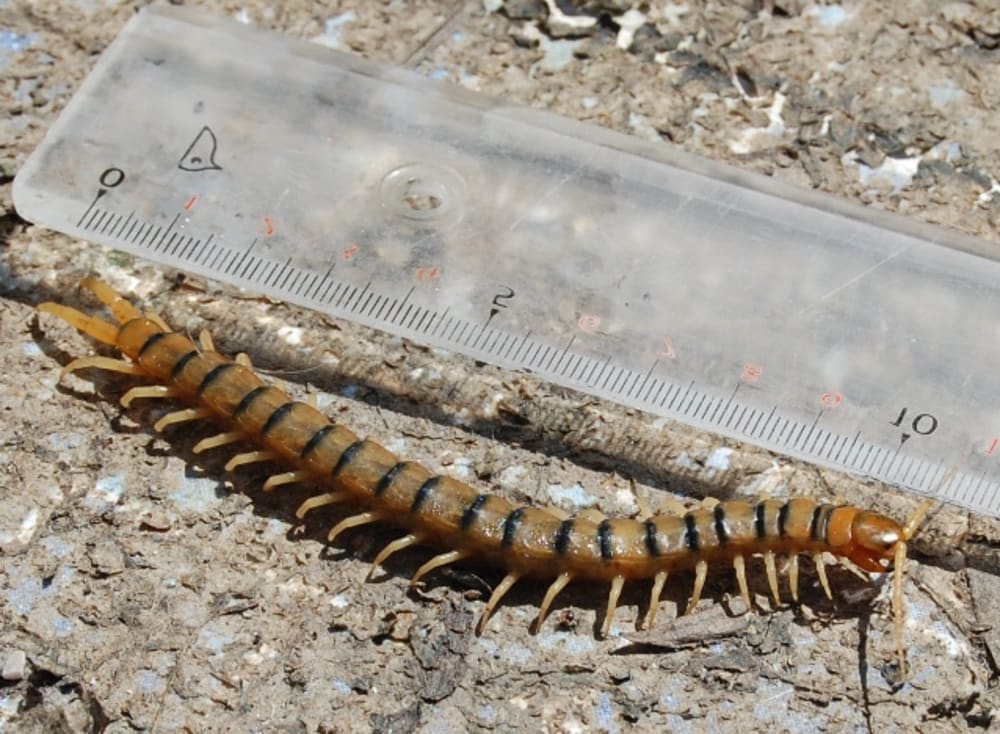
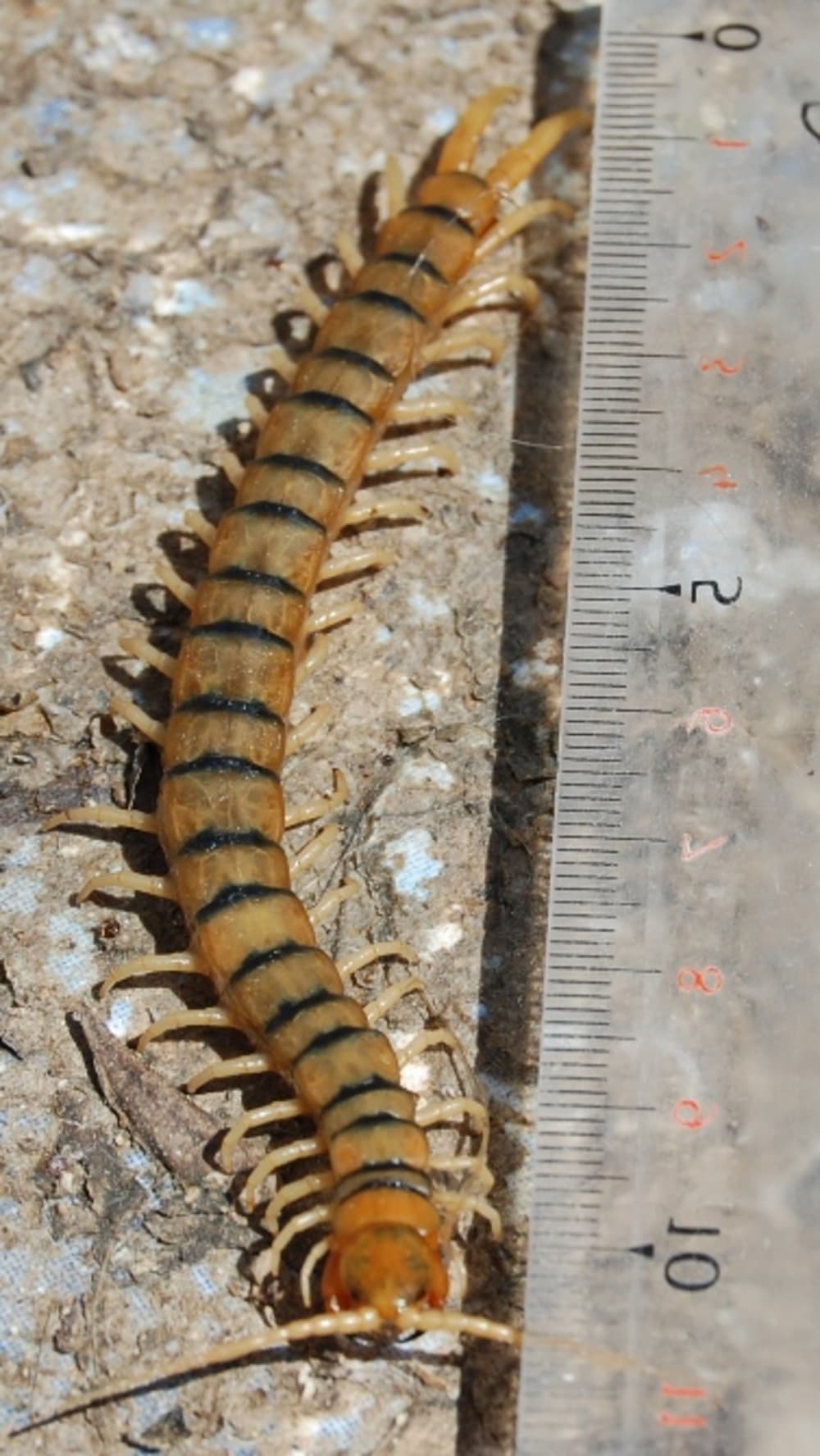
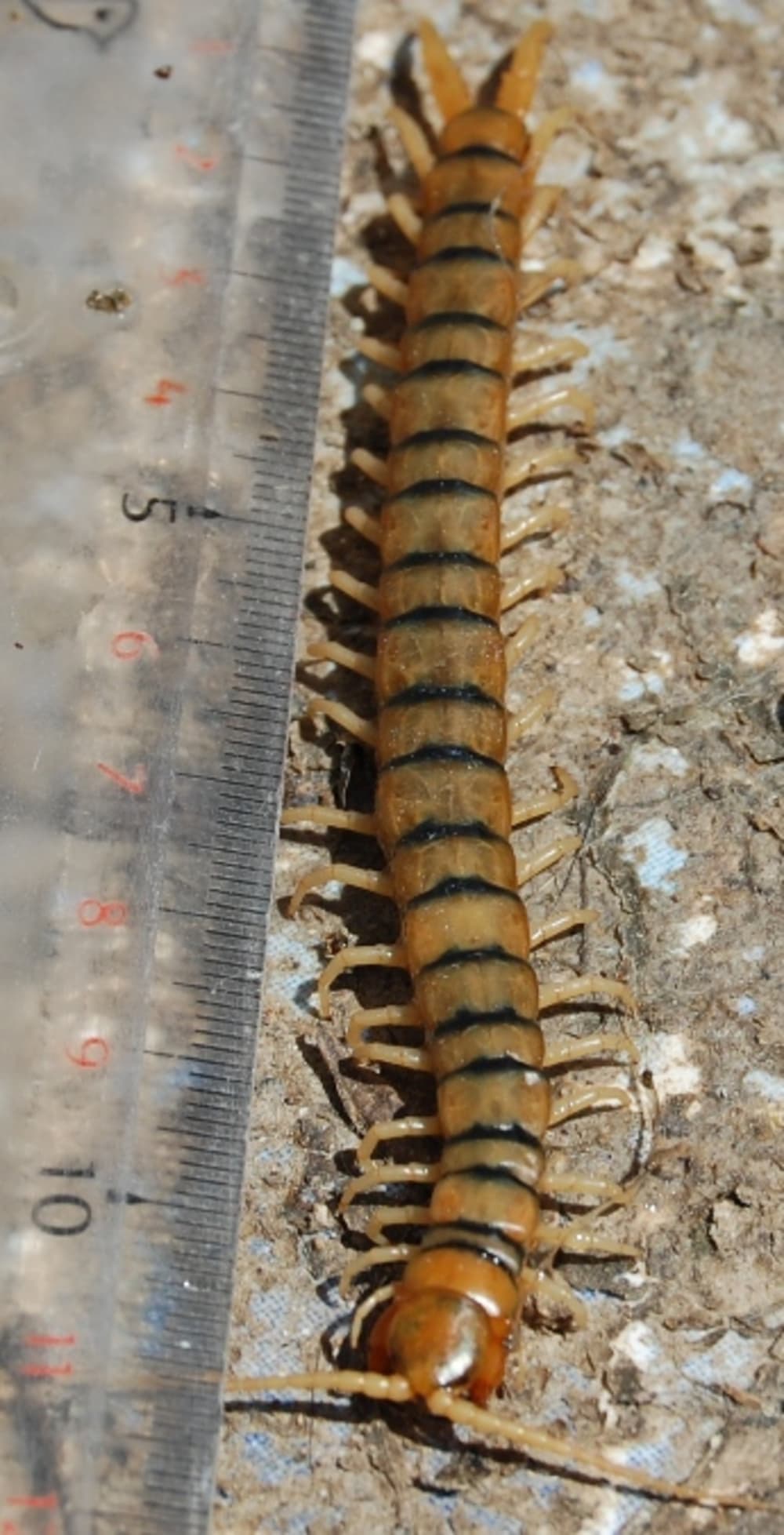
Comments
peejay: Yes it's Scolopendra cingulata, the Banded Centipede. They are amazinly fast aren't they? I've seen some individuals 15 cm body length. The ones offered on the internet are usually larger tropical species 20 cm and more. I expect you see quite a few Mantids too, don't you? I just love all these creatures.
Lizard - Large Psammodromus, 2009-05-12
Found this chap in the swimming pool after I had cleaned it out. Luckily there was no water in the pool so after a lot of chasing around the pool with a net I managed to catch him and free him.

Nosed grasshopper - Acrida Hungarica, 2009-05-30
So again whilst out walking this little insect jumped in front of me, now when I looked at it I thought it was some sort of stick insect but it turns out its a Acrida hungarica, nosed grasshopper to you and me, identified by the knowledgeable people on the Iberian Nature Forum!! Cute and strange thing. Nosed grasshopper (Acrida hungarica)
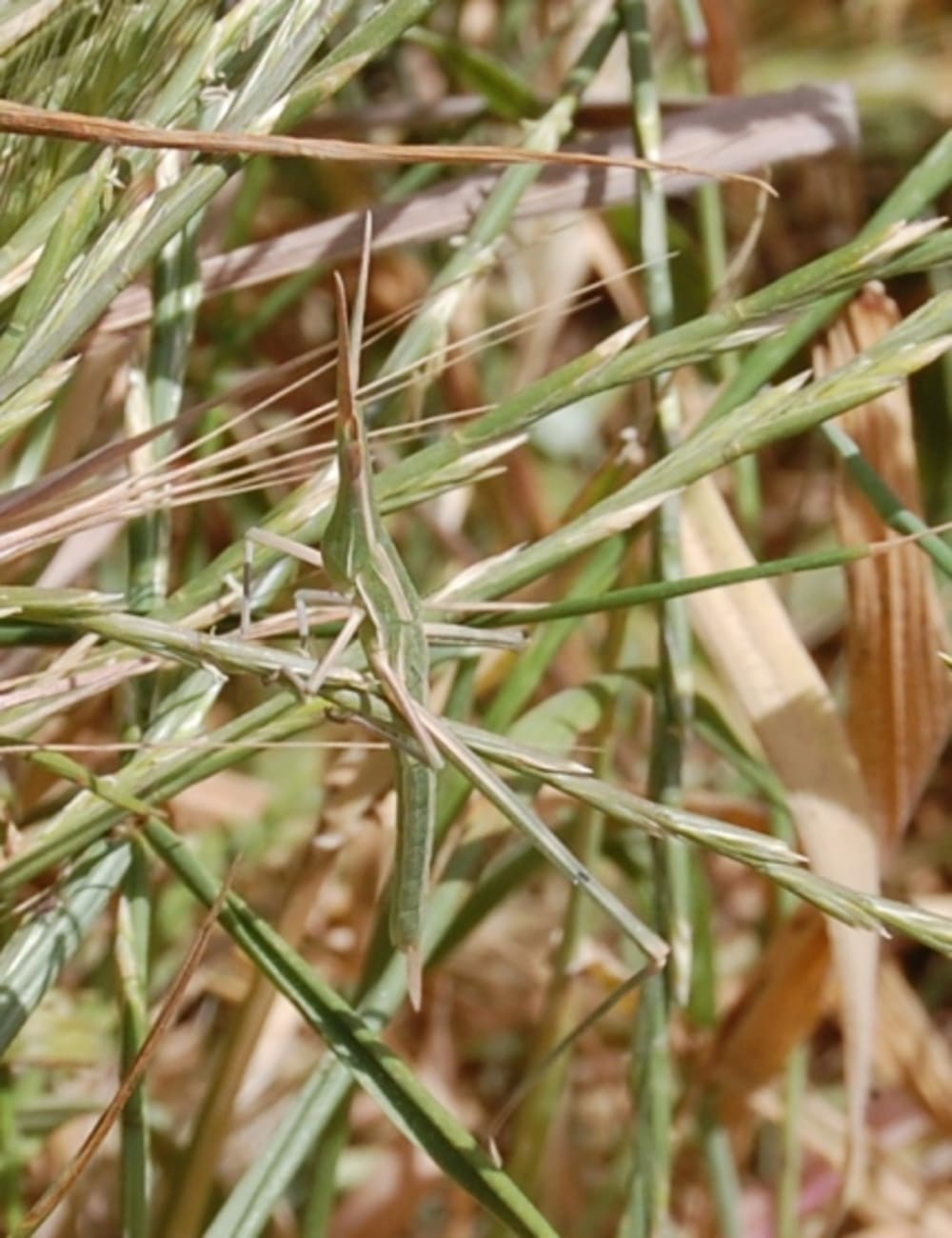
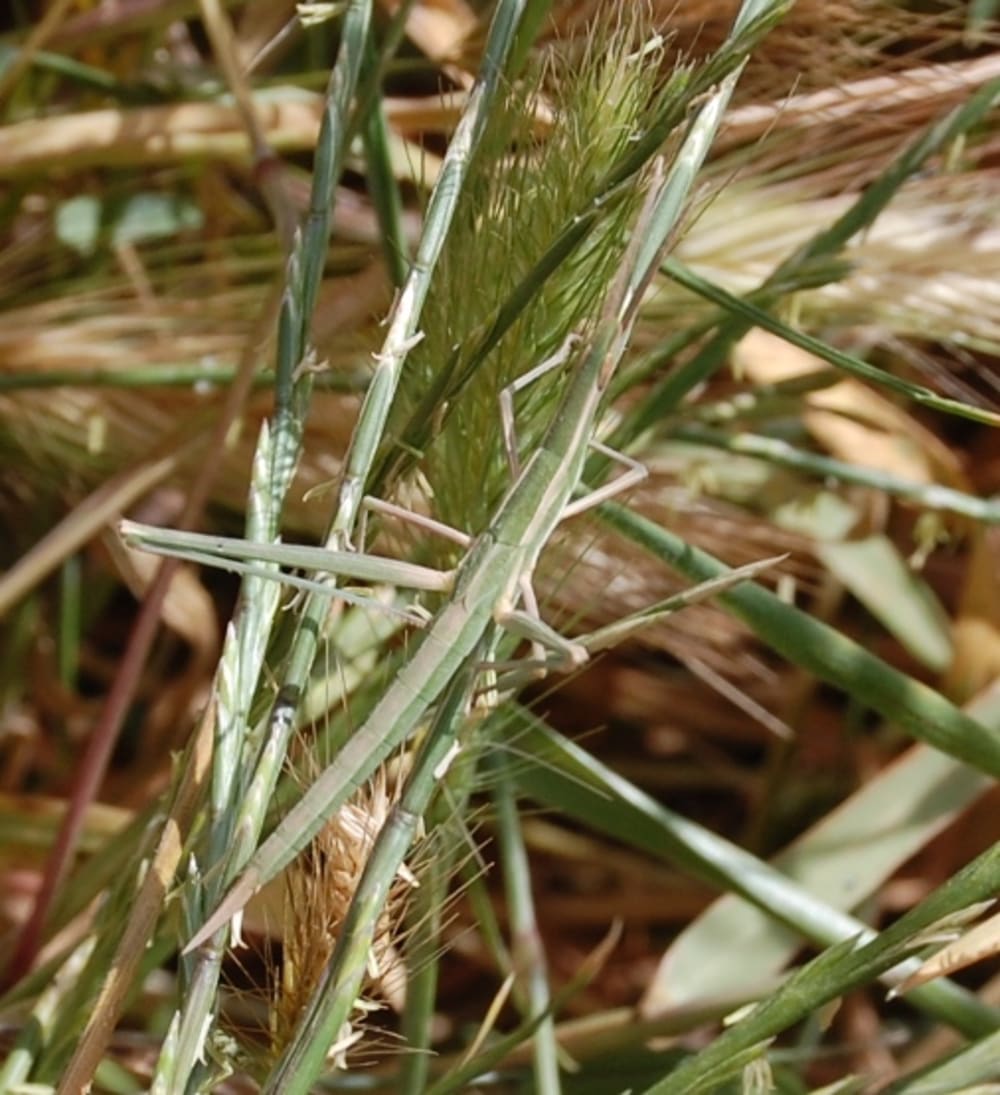
Opium Poppy - Papaver somnifera, 2009-05-30
Whilst out walking recently I came accross these pretty poppys. I took some pictures, got them identified yet again by the forum I use and it turns out that they are a type of opium poppy!!
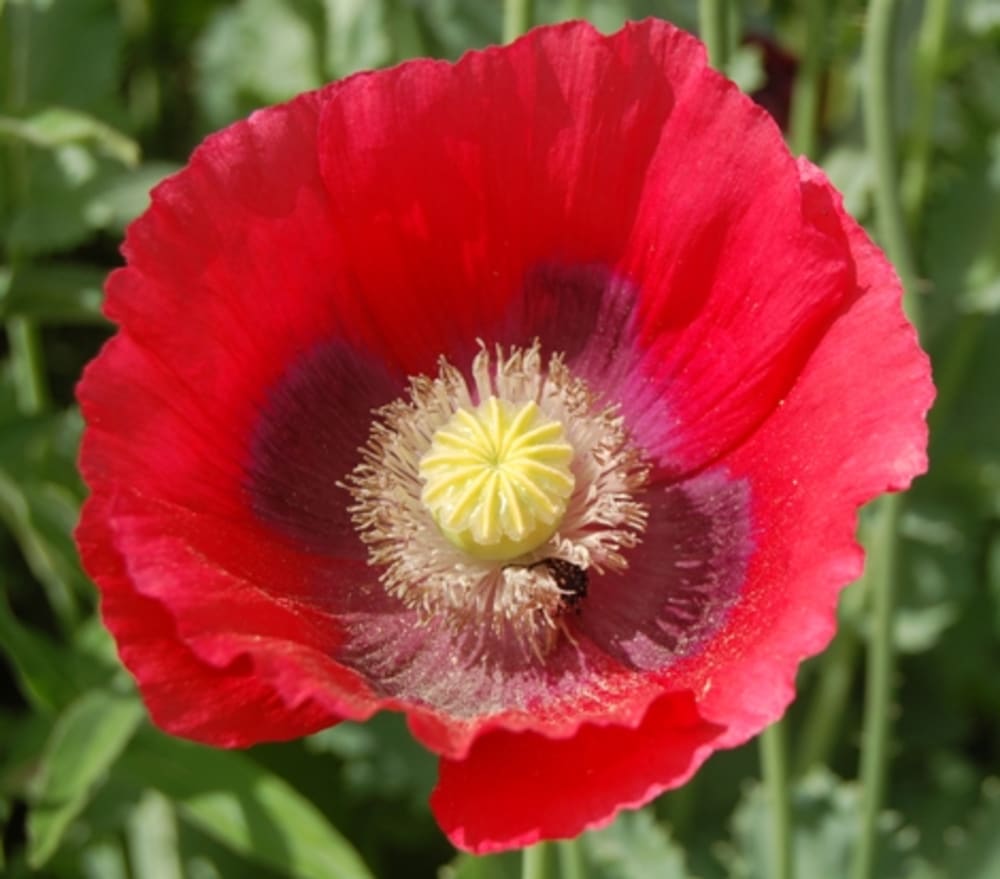
Papaver somnifera Opium Poppy
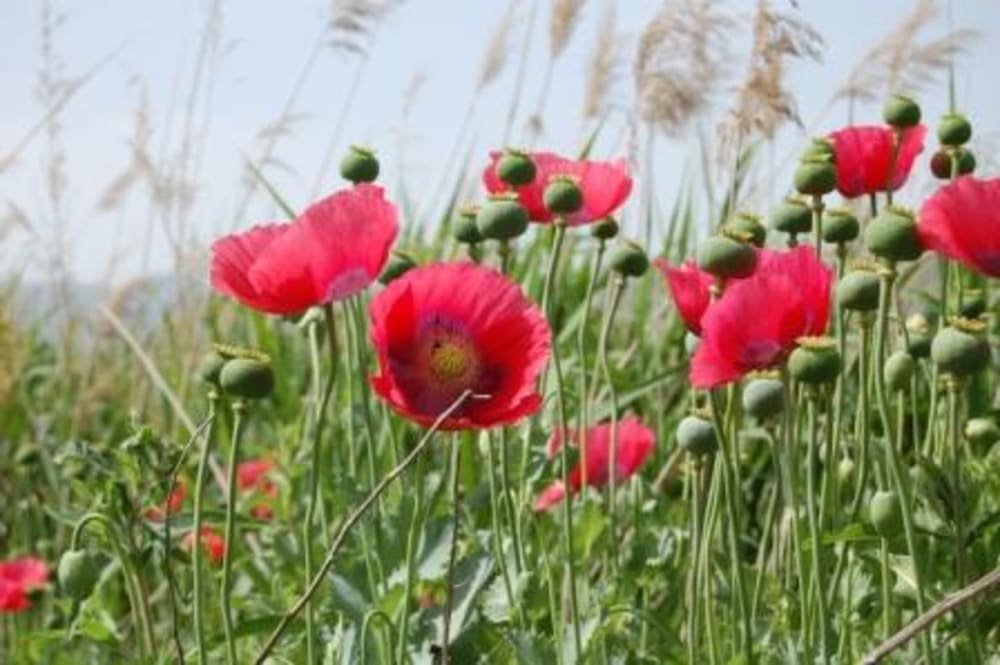
Papaver somnifera Opium Poppy
Moths - striped hawkmoth, small blood vein, purple marbled & leopard moth, 2009-05-30
We had a particulary dark night a few evenings ago and there were lots of moths fluttering about, even the gecko was getting a feast. I took some pictures and got them identified by the helpful forum that I go on Iberian Nature Forum. They are not the moths that im used to that are just brown and quite dull to look at. They are as follows:- Striped Hawkmoth (Hyles livornica)
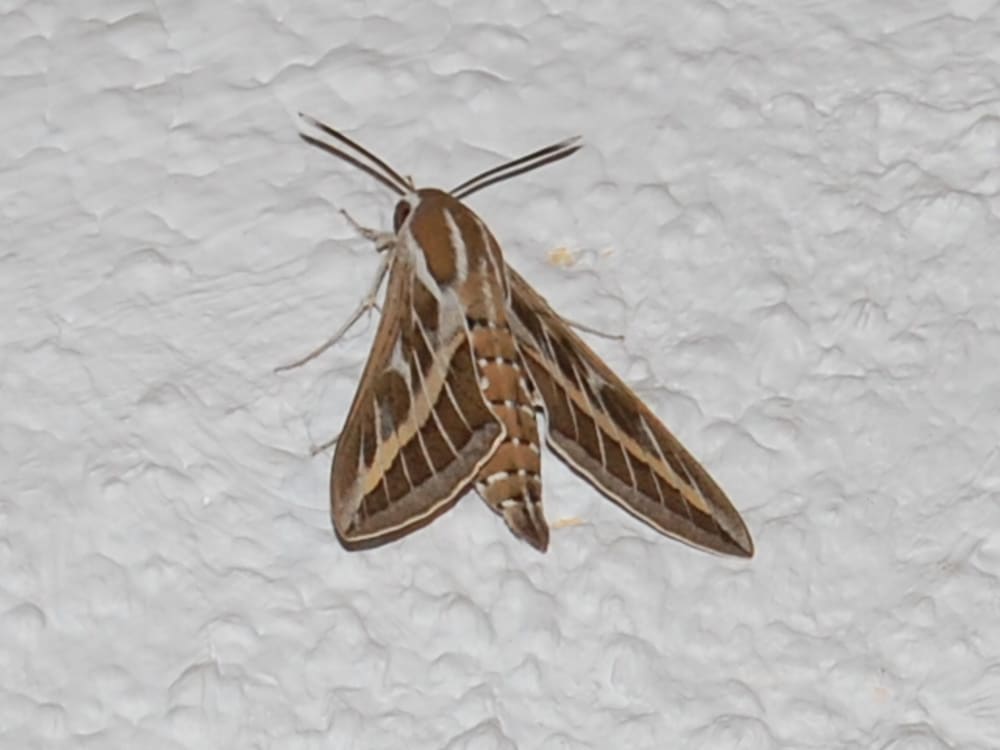
Striped Hawkmoth - Hyles livornica
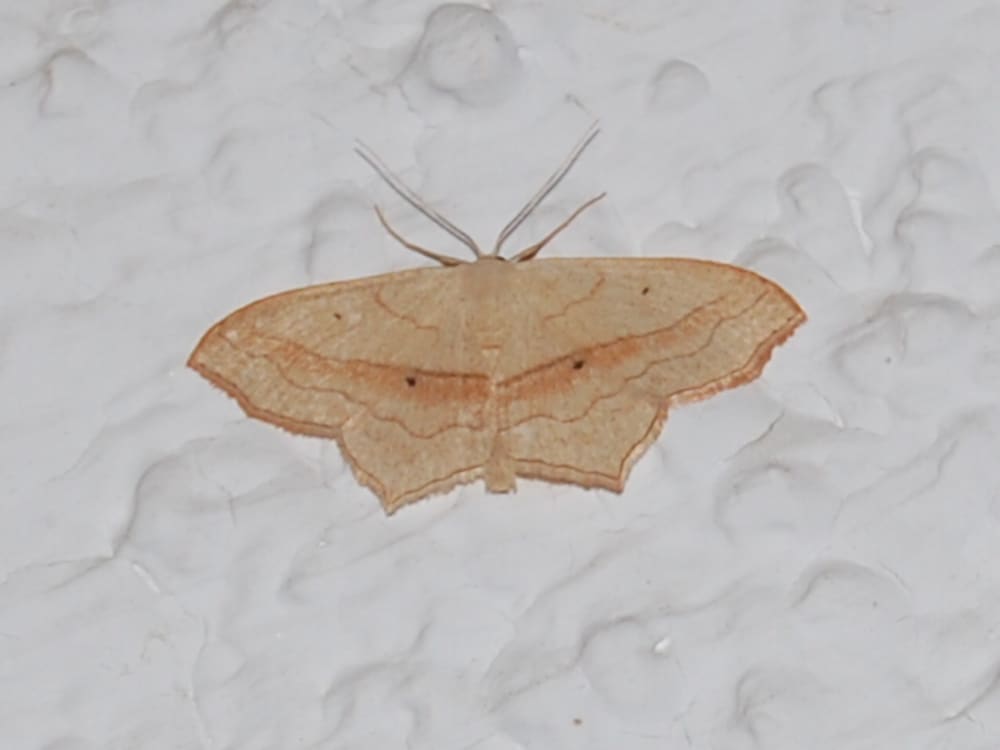
Small Blood-vein - Scopula imitaria
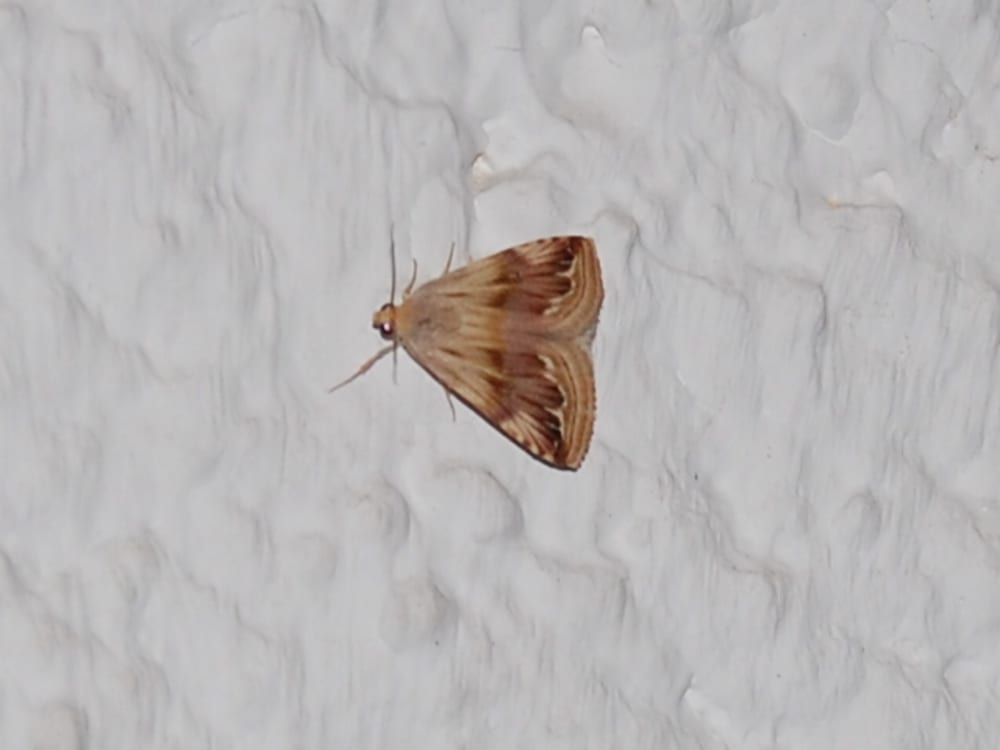
Purple Marbled - Eublemma ostrina
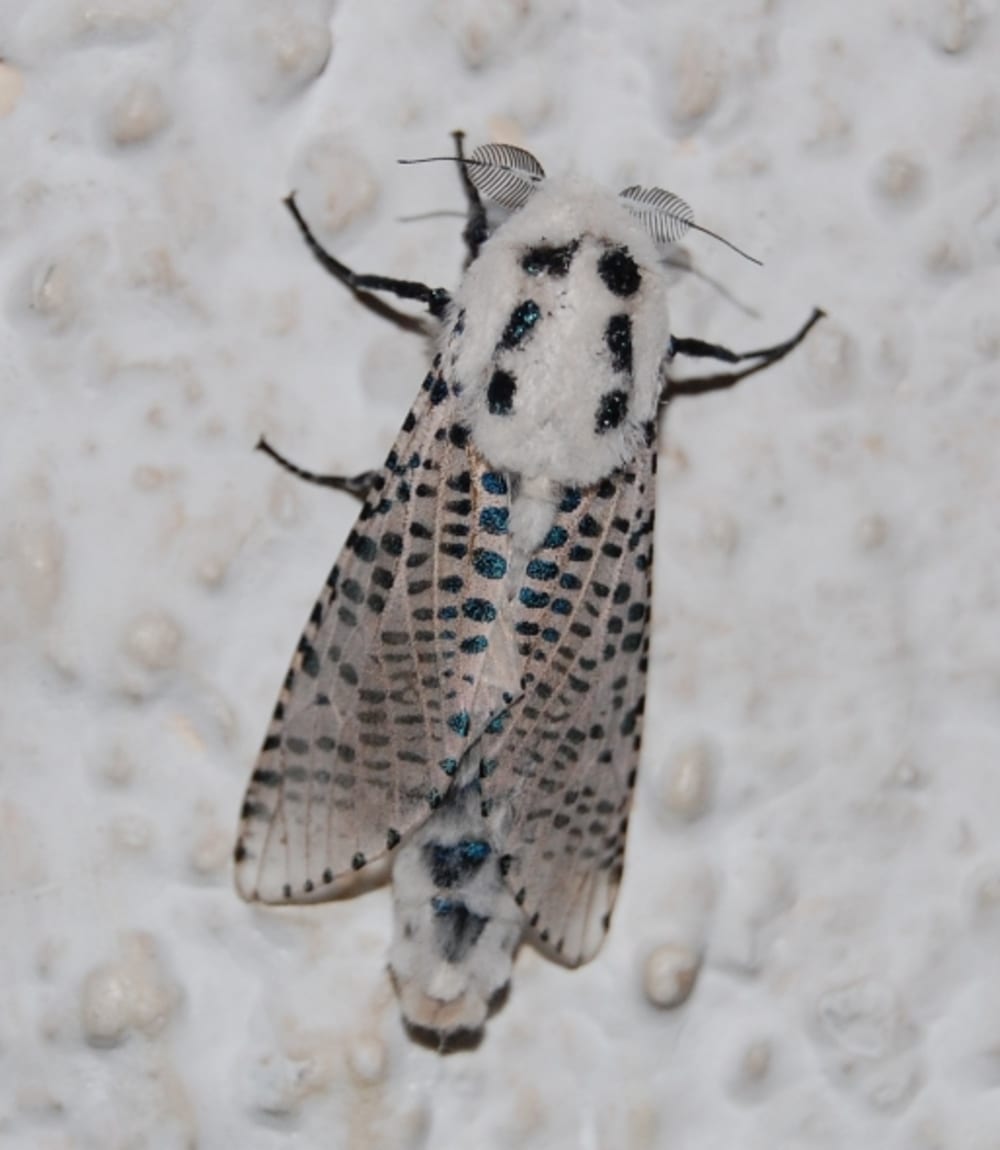
Leopard Moth - Zeuzera pyrina
Bee Eaters, 2009-09-08
I knew Bee Eaters were here in this part of Andalucia but I had never knowingly seen or heard them, now I do and I see them everywhere. They are a very pretty bird with a very distinctive voice and all I want to do is get a decent photo of them, what a mission that has become.
They fly over my home, up the valley, ive seen them on route to Cerro de Caballo, on route to Mulhacen, the road to Otivar, Sierra de Huetor, on the road to the electric station above Capileira, everywhere.
But can I get a good photo, NO I cant. They are timid and very flighty, they look beautiful as they fly over your head and the sun catches their colour but they just wont stay still long enough for you to creep up on them. Im begining to wish i'd never been introduced to them.
But we have a new weapon on its way, a bigger lense for our camera, now the only problem is hopeing that they don't all take off to Africa before the lense arrives! Below are a selection of my attempts so far to capture these flightly little devils.
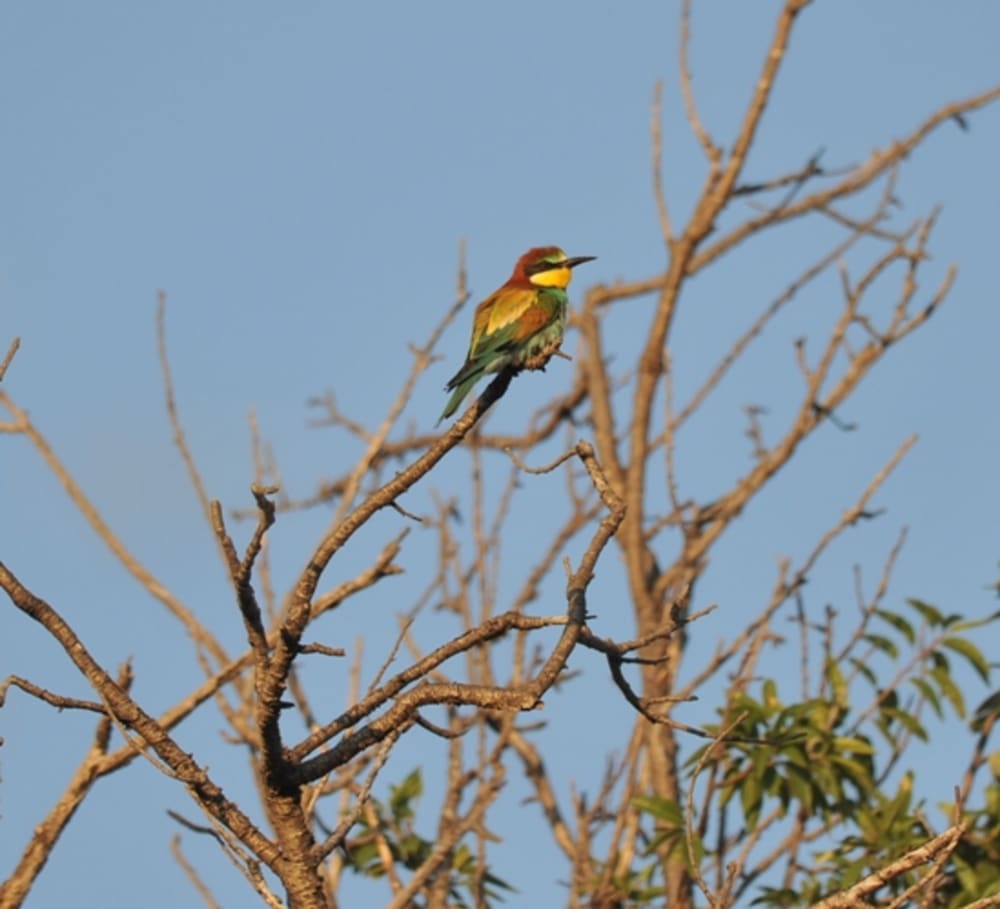
Dragonfly - Southern Hawker (Aeshna cyanea), 2009-09-27
Yes we have had the new lens for the camera a couple of weeks now, the Bee Eaters have gone to Africa so we have taken many photos of Sparrows but the best picture by me so far has been this beautiful female Dragonfly she is a Southern Hawker (Aeshna cyanea). She was flying around the swimming pool area ovipositing. She even landed on my leg but was too close to be able to take a picture of her with the new lens.
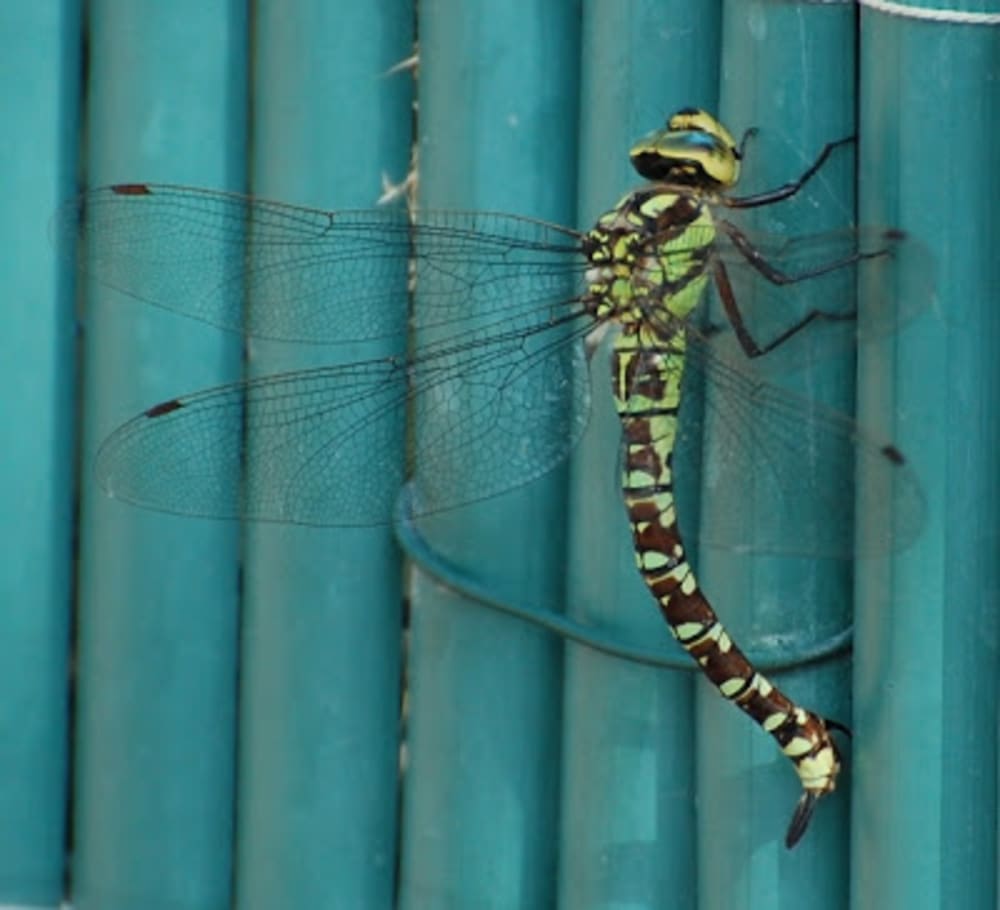
Spider - Araneus diadematus, 2009-12-13
I found this spider hanging out at a friends house above Lanjaron, its been identified as :- English - Cross Spider Spanish - Araña de la Cruz Latin - Araneus diadematus. This species of spider is "Spider of the year 2010" and is being studied by the Iberian Aracnologic Group who are collecting data and detailed pictures. If you have any data or photos on this species please either contact the group or me with the details. This type of spider often move home at night eating it's web and any insects that have been caught during the day.

Scorpion! - Buthus occitanus or Buthus ibericus, 2010-06-06
So there I was minding my own business weeding away in the veggie garden, when I felt a sharp pain in my finger. I took my glove off to investigate what the problem was but noticed movement to my right ........ a scorpion making a run for it! I think I had been stung by the scorpion but luckily because I had gloves on they stopped the full impact.
These scorpions are not deadly but can produce a very painful sting
So after my encounter with the scorpion I started using a trowel to dig up the weeds, which then I managed to dig up a Scolopendra! Ive mentioned these before in a previous post. That evening whilst sat on the roof terrace keeping an eye on the chickens who had been let out for a run around I heard something crashing about below me. I looked down to the swimming pool terrace to see a snake about a 1.5m long trying desperately to get over the fence. I did not take a photo of it as I was trying to get the dogs inside as they were a little to keen to find out what was making the noise. But it was big, dark and moved incredibly quick. Ive given up weeding for now unless im wearing full body armour. Word of warning, if you do go into the garden to weed in Spain, wear gloves, long trousers, long sleeved t'shirt and boots. DO NOT wear no gloves, shorts, t'shirt and flip flops!
Comments
Dena Rowlands: It's stories like this that make me think twice about my plan to someday sell the business and live on campo! (currently live in small Spanish town) Still, it's probably a small price to pay for outside space and CHICKENS!
Victoria Twead: How come you attract these pesky critters? I've never come across any of them, touch wood. Except a very shy snake once. Perhaps I don't do the weeding enough? :)
Thread-waisted Wasp (Sceliphron spirifex), 2010-08-08
Living here in the campo of Lanjaron in Andalucia you get used to seeing some strange insects. I photographed this one the other day. It is a Thread-waisted Wasp. No need to worry about these they are solitary and non-aggressive unless mishandled.
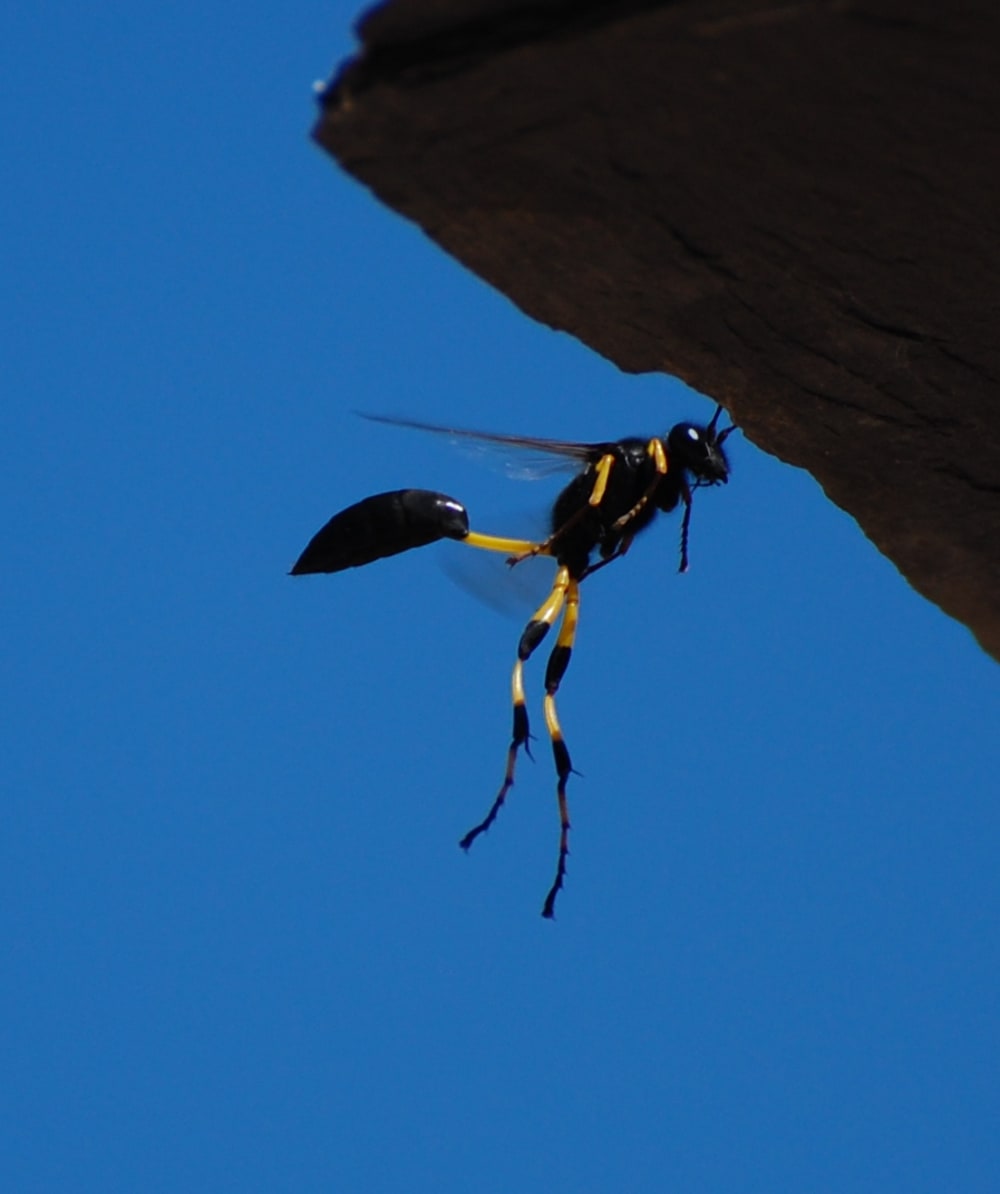
Thread-waisted Wasp -Sceliphron spirifex
White-throated Caracara in Patagonia, 2011-01-19
Thought you might like to see one of the characters I met whilst in Patagonia recently. Its a White-throated Caracara (phalcoboenus albogularis).

We had walked to the Laguna Torre to get a nice close view of one of the most iconic mountains in the world, Cerro Torre, whilst admiring the view the Caracara came along and gave us a great half an hour or so of entertainment. Even people who had no interest in birds were taking photos and video.

In the books it is described as shy and wary, well I can say I think the books need to be re-written as our bird seemed to thoroughly enjoy its encounter with humans. If you want to see more photos then have a look at the Smugmug Gallery.
Comments
Emma: Wow, that videos fab, bless him. Their not bothered by you in the slightest are they!
Khyra's Mom: Nothing like a raptor to take my breath away!
An incredible encounter with Golden Eagles, 2012-02-23
I had the most amazing Golden Eagle encounters yesterday. I was driving up on the Ventura track to extract some Spanish Highs Mountain Guides clients who had been on a 4 day winter mountaineering trip in the Sierra Nevada. On the drive up a Golden Eagle flew right over the car so close, I stopped the car and took some photos BUT the eagle was in the cloud so I have some great silhouette shots as you can see!!!!
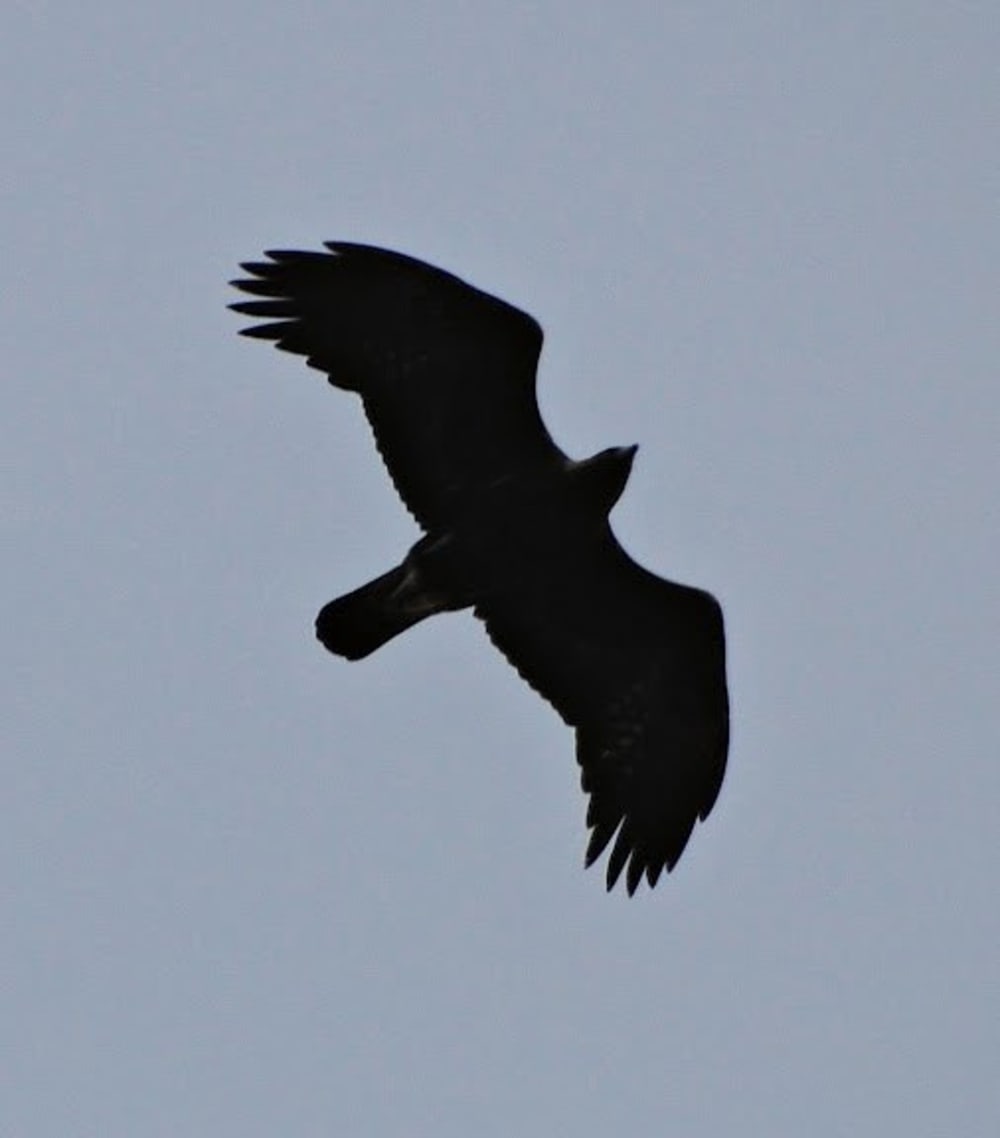
I arrived at the meeting point at 2000m far to early so sat on a rock taking in the view in-between the clouds blowing in and out. All of a sudden 2 Golden Eagles flew up the valley below me, I managed to grab some photos of them but they were a long way off and it was not great light.
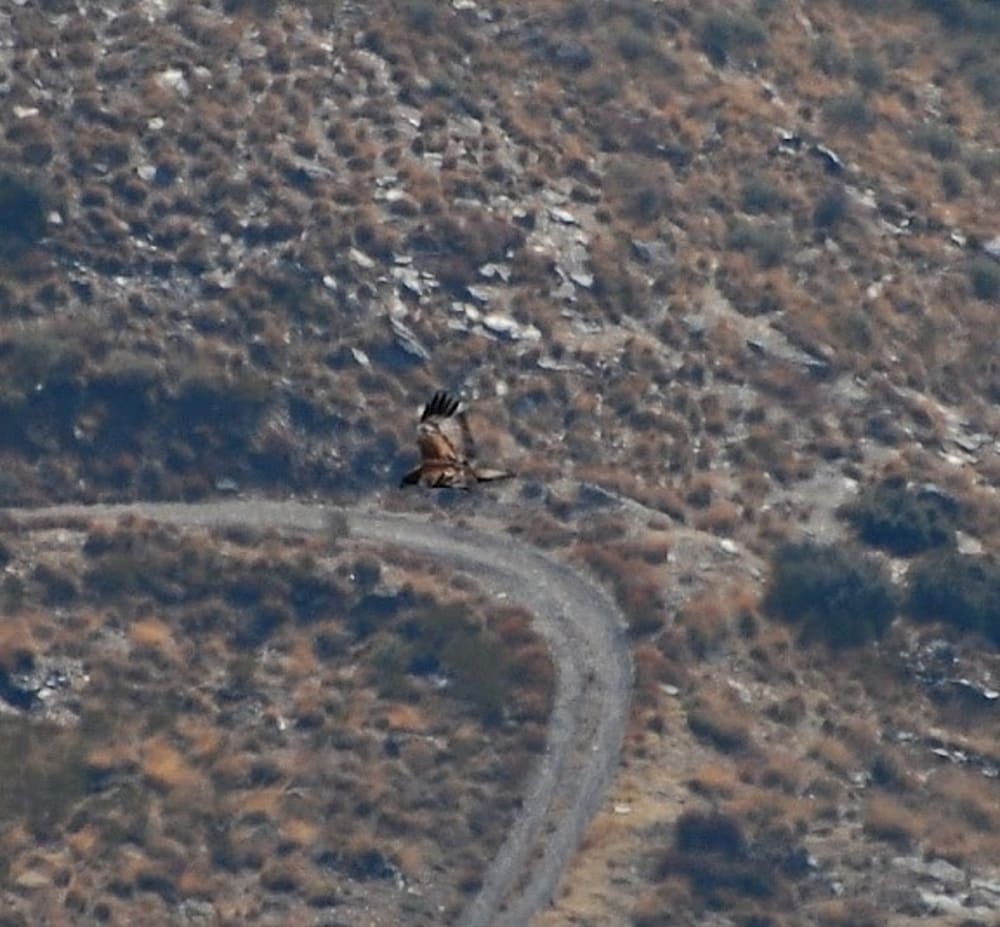

Then an hour or so later (told you I got to the meeting point to early), in came the cloud. Its quite spooky when your at 2000m on your own in the cloud, your mind starts to play games with you.
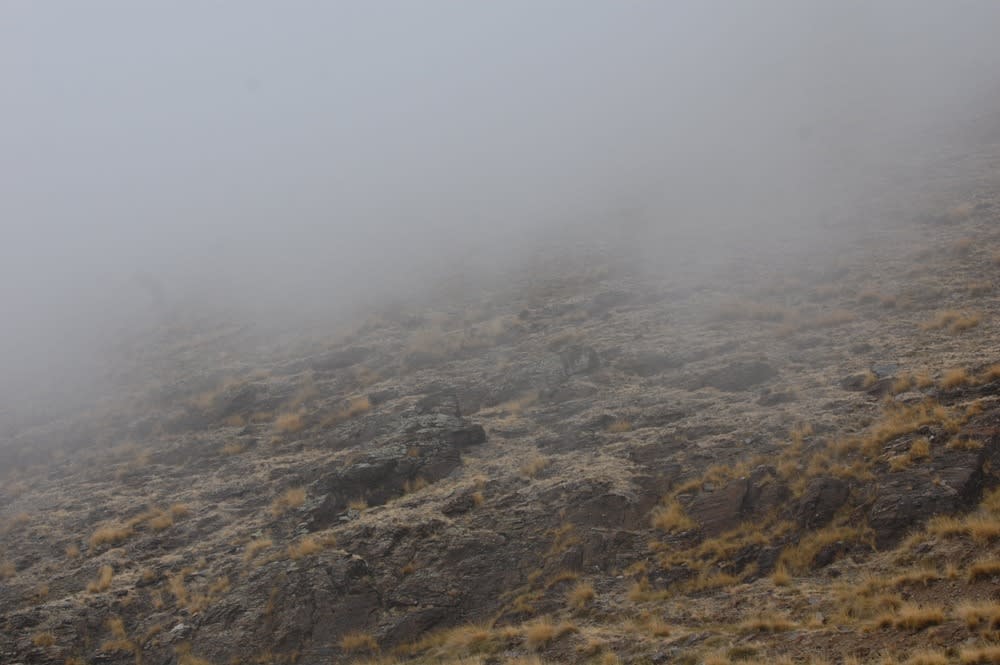
I heard a really strange noise. My brain was trying to recognise what the noise was. First of all I thought it was like a freaky mini tornado or similar but could see no vegetation moving, then my logic (yes ok its time I was locked away) told me it was an areoplane with no engines falling out the sky (it was that loud).
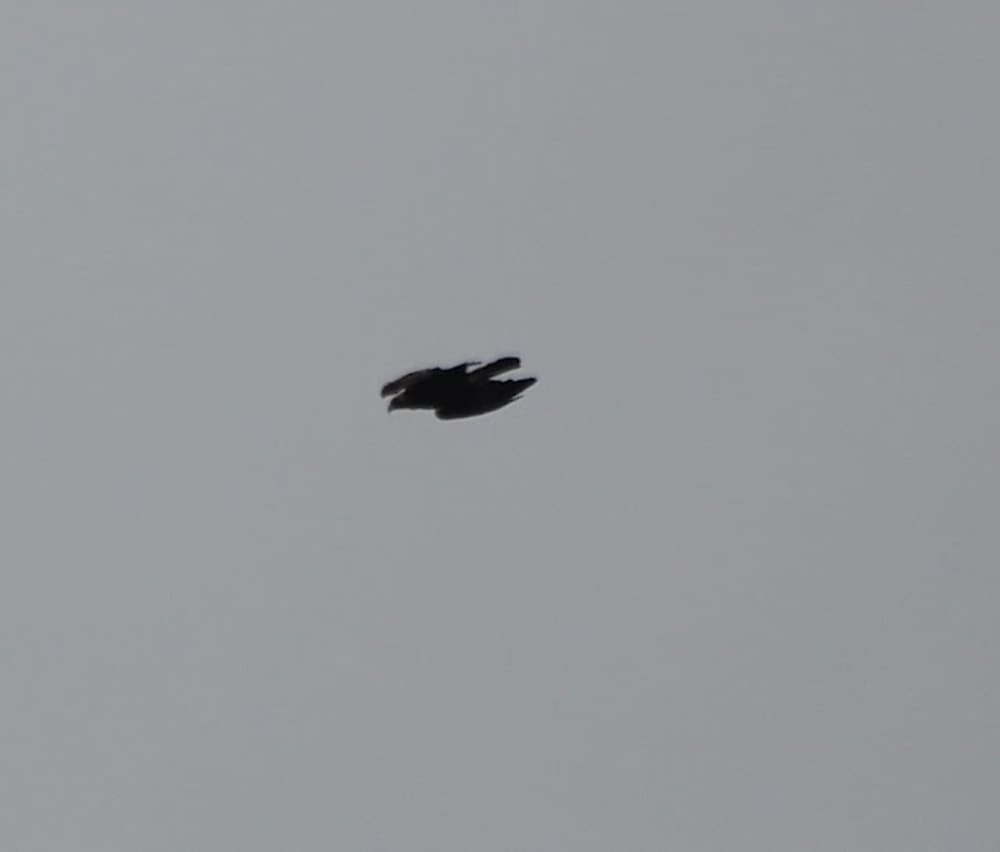
But then one of the eagles appeared out of the clouds, which cleared up the mystery for me. It slammed the breaks on and shot off vertically up into the clouds (like an RAF Harrier plane). I know there were 2 eagles there although I didnt see the first one because it didnt drop below cloud level I certainly heard it. I managed to snap the one photo. It was the most awesome moment i've had, the noise was incredible. Just a shame all of these sightings were in the clouds which has meant poor photos, but the experience was amazing. Ive no idea what the eagles were up to, to me they seemed to be having great fun dashing around in the cloud and scaring the life out of me.
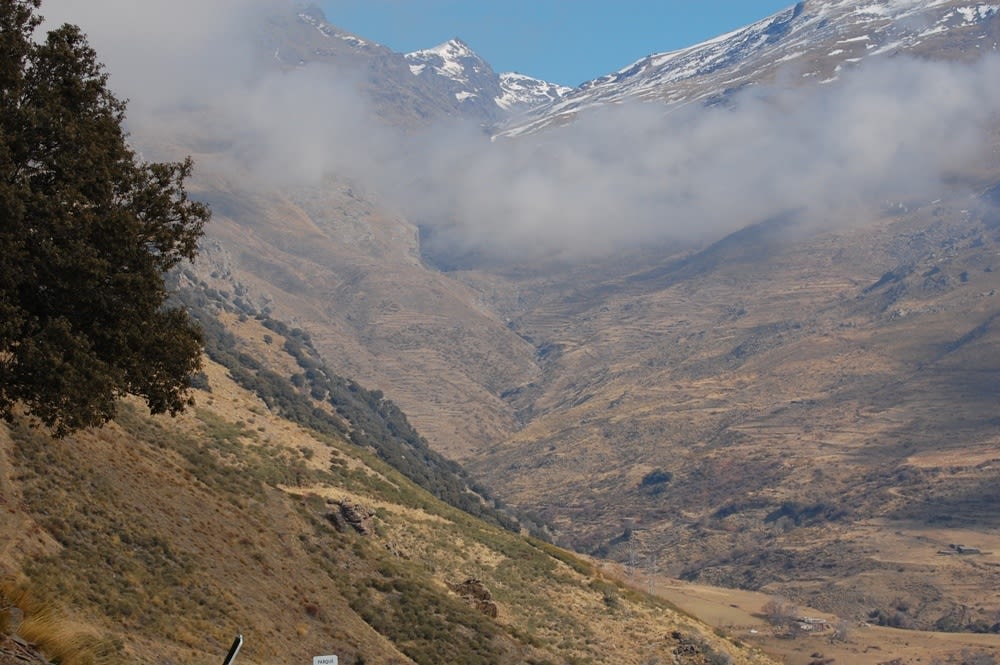
If only the views had stayed like this
Comments
Gus: Wow, Kiersten!!! i would have loved being there with you!!! amazing experience indeed!! awesome creatures, eagles...i bet they were laughing at you, jajaja :))) Thank you for the story and the pictures, i enjoyed them very much! Kisses Gus
On the trail of the Quebrantahuesos!, 2012-10-06
The Quebrantahuesos (bone breaker), Gypaetus barbatus, Bearded Vulture, Lammergeier, Lammergeyer or what ever you want to call it, is one of the rarest birds in Europe. Once upon a time it was a common bird in Andalucia, but thanks to poison, poaching and hunting the bird became extinct in Andalucia during the 80's. This left a population only in the Pyrenees.
There has been a successful but slow (takes many years for these birds to reach maturity) re-introduction programme based in the Sierra Cazorla. The Bearded Vulture lives mainly on a diet of bone marrow. It can swallow or bite through bones where its powerful digestive system quickly dissolves the bone. It is probably known more for taking larger bones up into the sky and dropping them to the ground to smash into smaller pieces.
![]()
Hortelano's Tracker
So when somewhere on facebook a picture was posted of one of the released Lammergeiers which is carrying a GPS tracker, showing up in the Sierra Nevada, it was too good an opportunity to miss to go and see if we could find it. Needle in a haystack comes to mind, but you have to get out there and try. A date was set (happens to be my birthday), Richard, me and the dogs met up with Pepe and away we went.
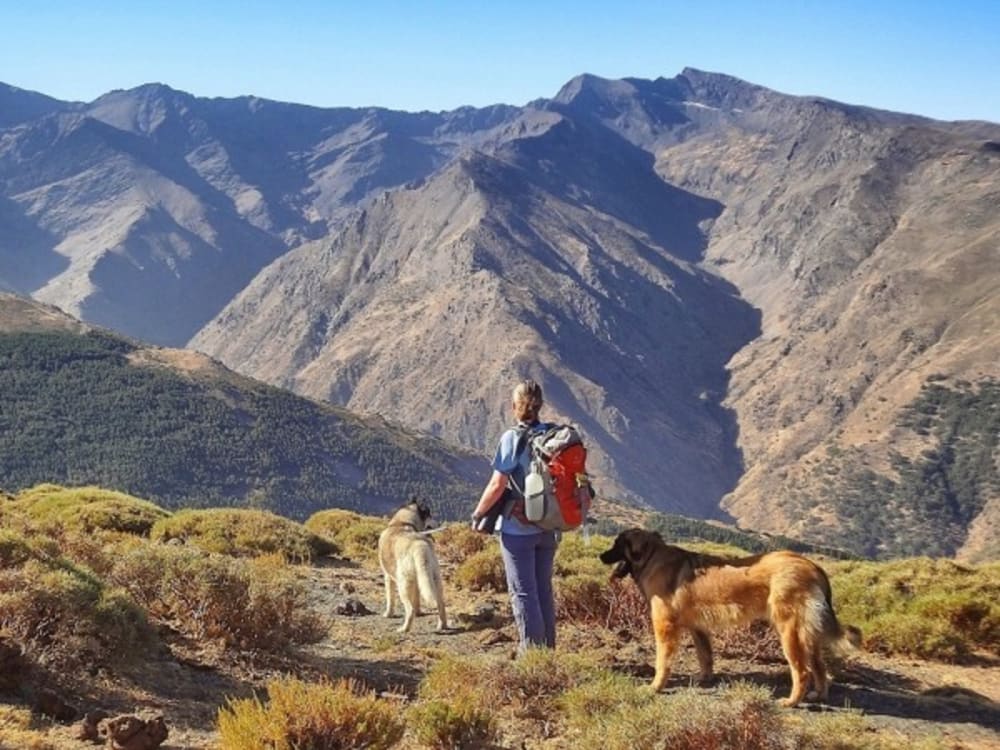
Forever hopeful
We walked for hours to the area where this bird, called Hortelano, last sent a GPS message from. As it turns out during the month of September 3 released Lammergeiers had visited the Sierra Nevada, which is just fantastic news. Sadly for us the haystack was too big and the needle too small and we never did see Hortelano.
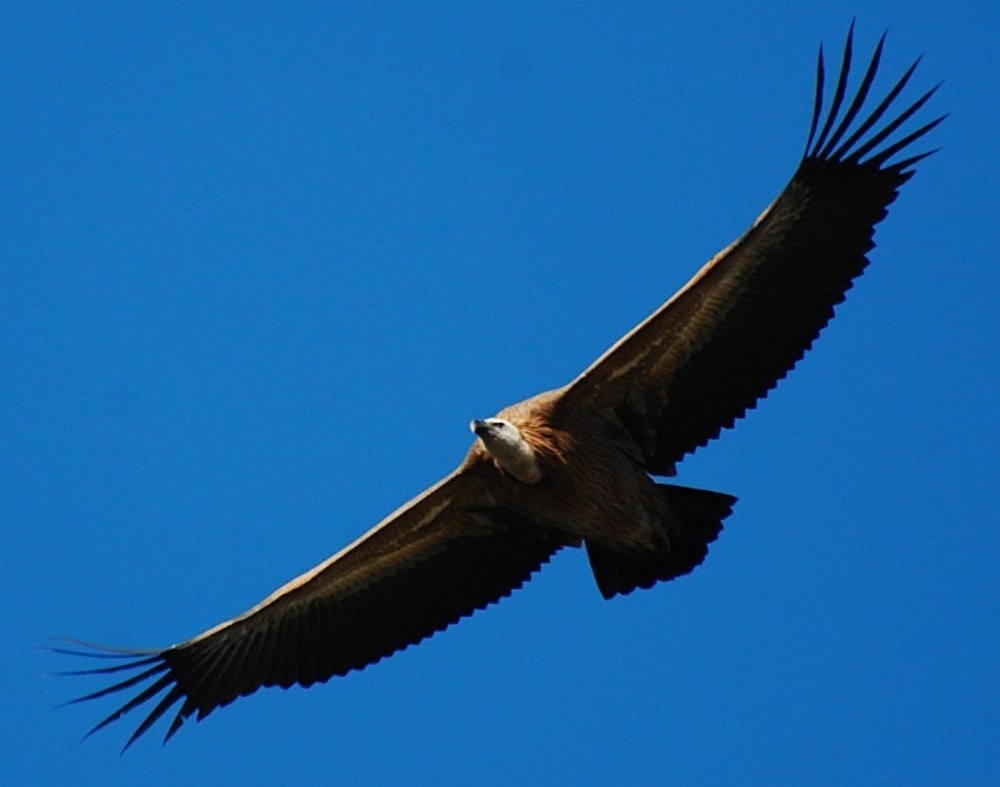
Griffon Vulture
However we did see many Griffon Vultures, showing that the Sierra Nevada is, once again, able to sustain these wonderful scavengers.
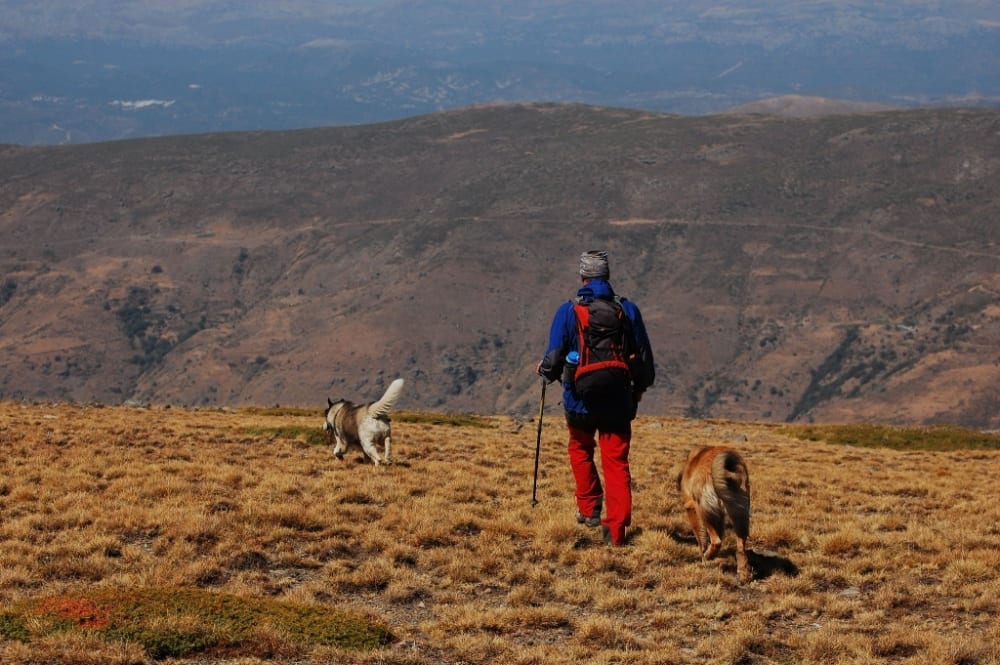
Heading back to find the car
I have been given kind permission by Clive Finlayson to use the Lammergeier photos you see in this post. Clive is an outstanding photographer, author of many books, has spent his life studying birds, excavating archaeological sites and researching historical texts.
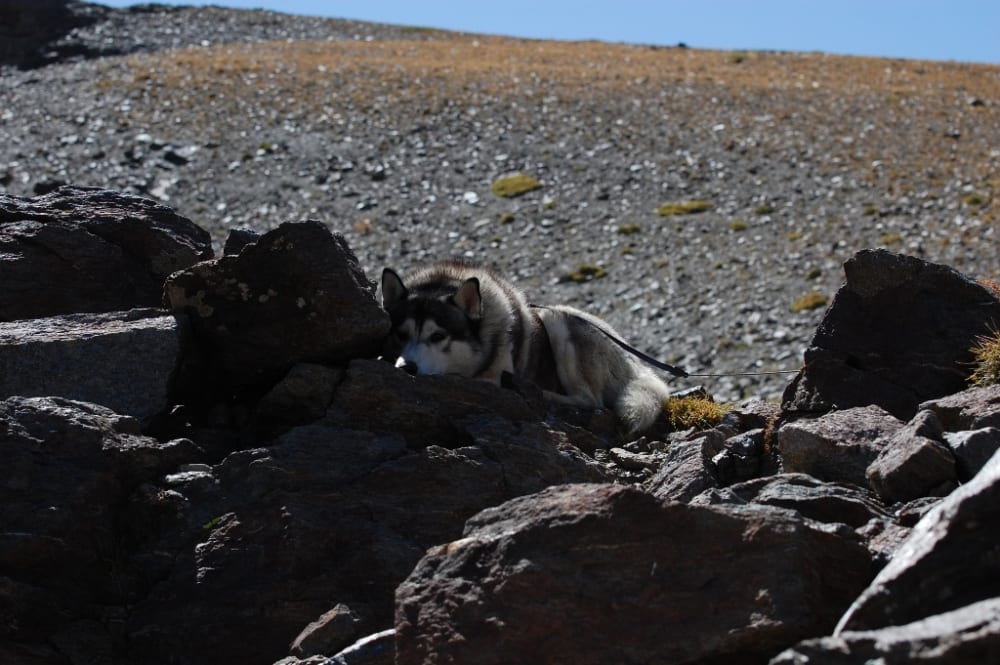
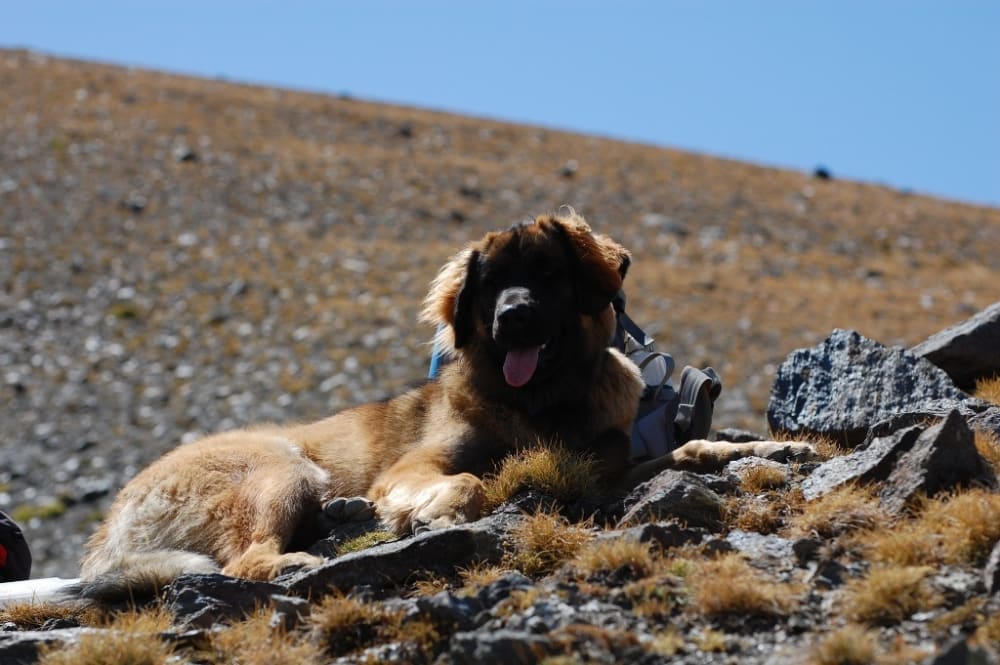
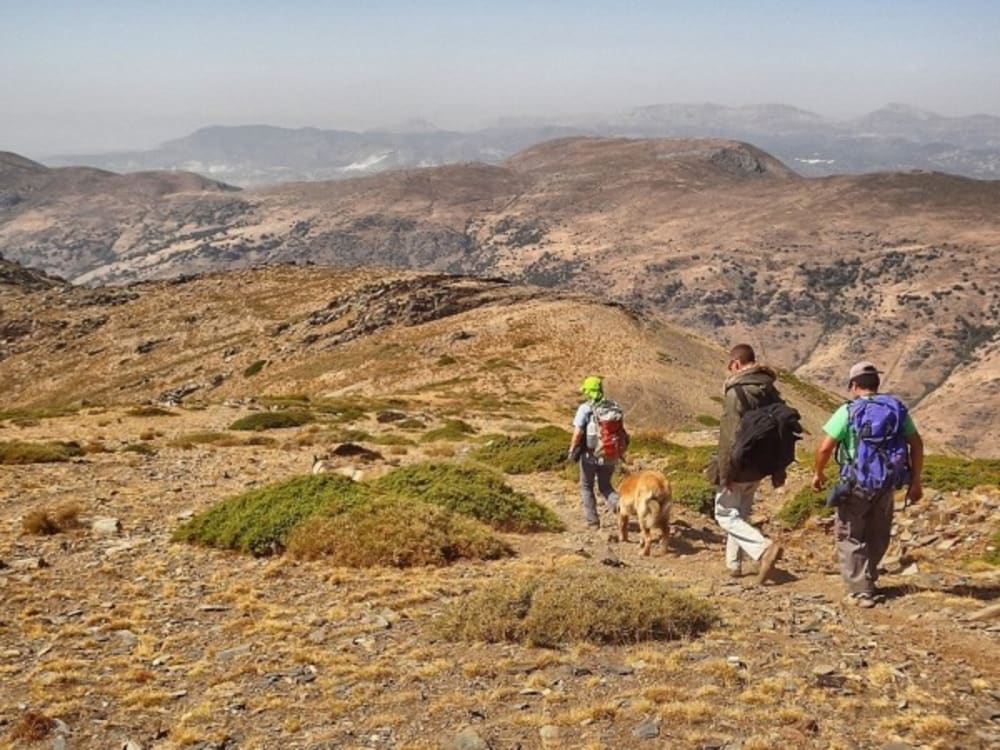

The beautiful Lammergeier
The day I met an Ocellated Lizard, 2013-05-09

Me - Oh hello Lizard - I smell banana

Lizard - Don't mind me I'm just heading over here

Lizard - Ha fooled you, I'm going this direction instead

Lizard - I'm not sure I like having this camera in my face

Lizard - Change of direction again, I'm heading over here now, don't mind me

Lizard - I can can't I, I can smell banana

Lizard - Just pretend you can't see me

Lizard - I'm smiling for your camera

Lizard - I don't want banana anymore, I'm off to see what's over here. Me - You be careful out there in the open

Lizard - Just kidding, of course I want banana

Lizard - I'm on way

Lizard - So come on where is it. Me - Well you took your time, I've put it in a crack in the rock to keep you safe

Lizard - That's a great idea thanks
 Lizard - Boo made you jump
Lizard - Boo made you jump

Lizard - Thought I'd come and see what else you have up here

Lizard - Is that an apple I see in your bag

Lizard - I do really really like apple

Lizard - Take the shot and I'll do you deal

Lizard - How is this
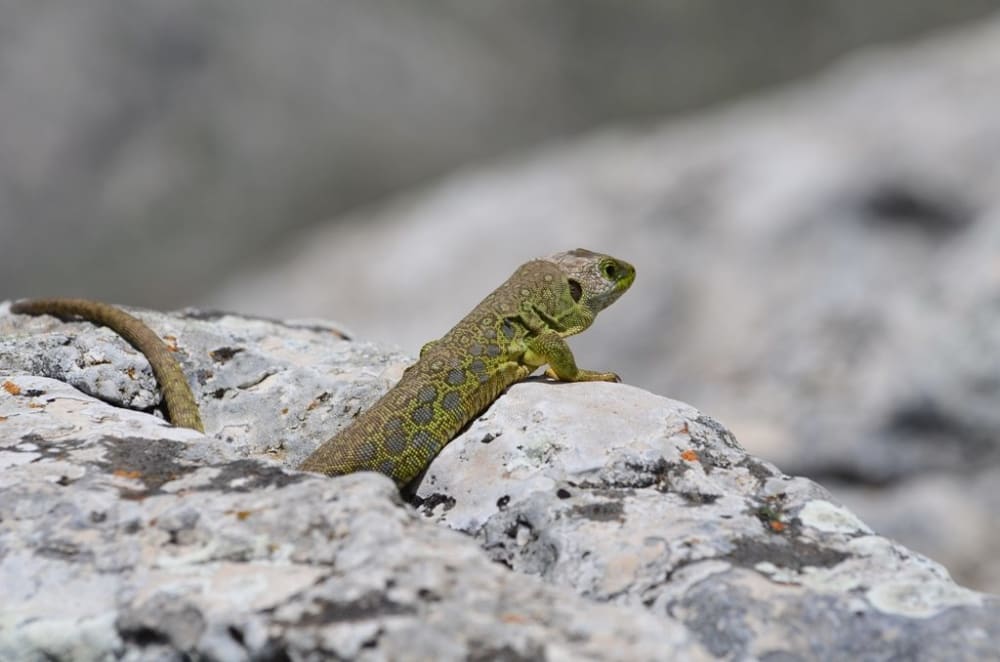
Lizard - Right that's it I am off if you are not giving me apple. Me - okay be safe out there and nice to meet you
Comments
Lainy: We loved it, lots of giggles from the kids. Excellent photos. You were really lucky that he/she came so close. x
peejay: What a fearless fellow. I suppose he thought,"I'm too big to tangle with."
The red palm weevil (Rhynchophorus ferrugineus), 2013-11-08
Many times I've stood next to the palm tree in the garden and thought the tree sounded alive. Little did I know it was actually being eaten alive. I have mixed feelings about this tree I hate it because it spikes me quite often and when it spikes you it really hurts and the spikes are incredibly dangerous to the dogs but I hate to think that it is ill and something is killing it.
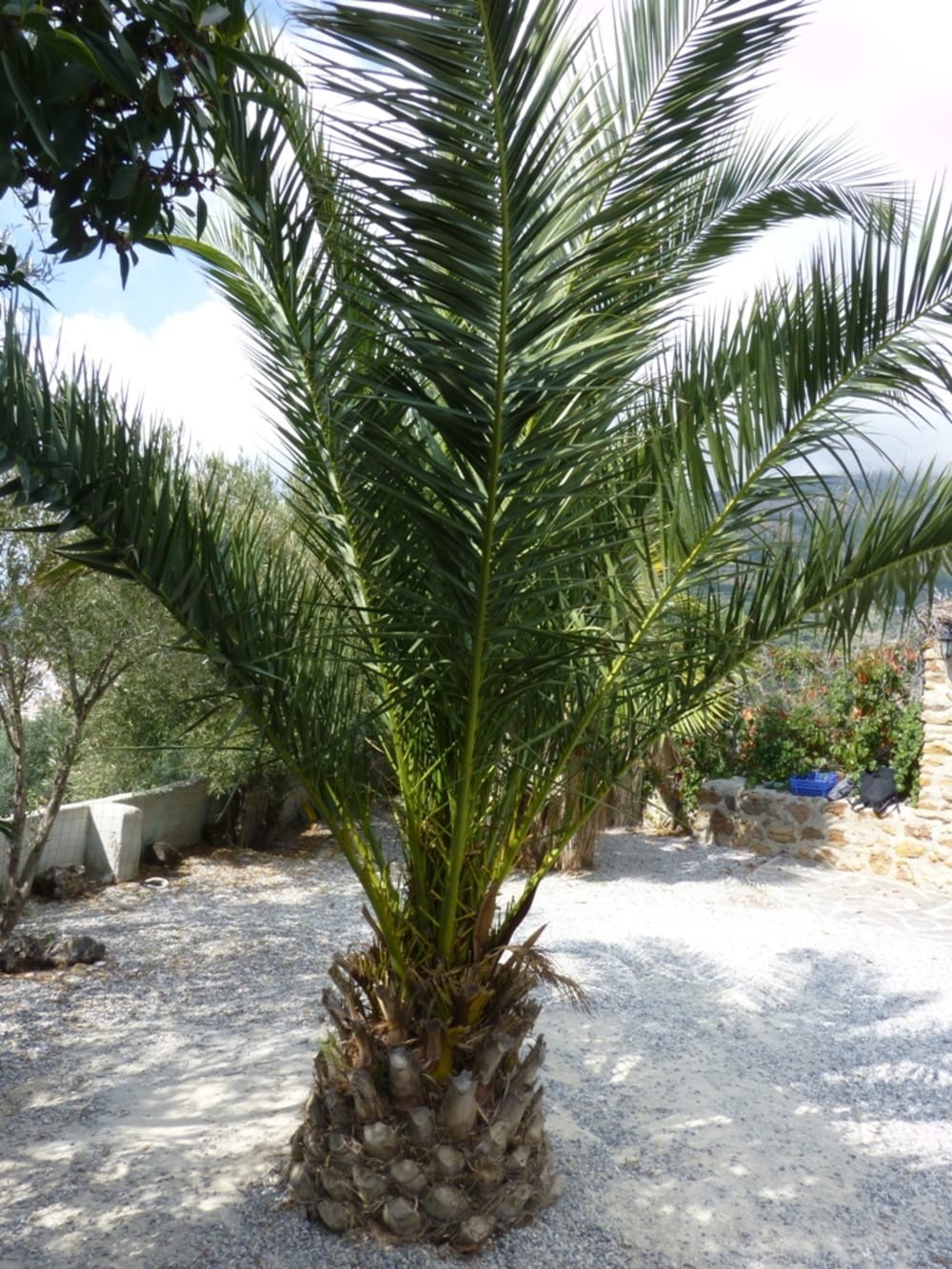
Palm Tree
Anyway one time I was outside and this insect came out of the tree. I took a photo and posted it on Facebook, it wasn't long before I had an answer, the palm tree was infected with red palm weevil and death would follow. There were a few ideas on how maybe to get rid of the weevil but all of this needed poison and that I will not let in the garden. So it was just a case of waiting. In the meantime I'd found out it's best to burn the trunk to help stop the spread of the weevil, unfortunately for us we have not had any significant rain since May, fires are still banned. Burning is not going to happen any time soon.
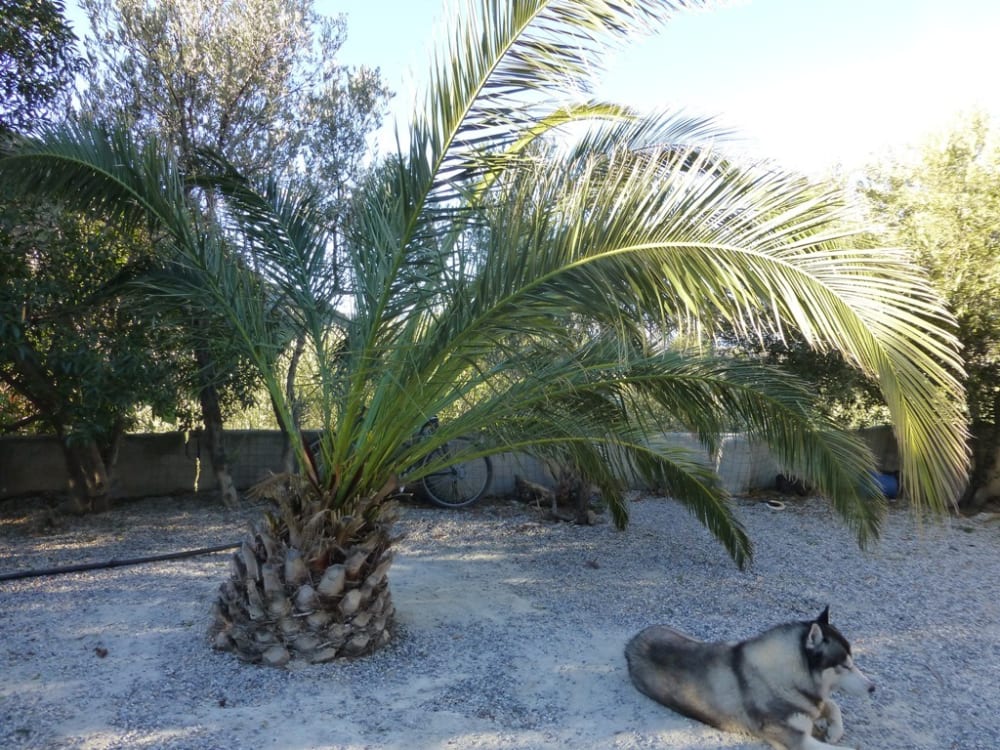
Problem Palm
One month after I put the photo on Facebook we had a windy day and the palm leaves mostly fell to one side. It was time to cut them off. Which I did and got spiked. Then today, Pepe has been here working and pulled what was left of the palm tree and it split open. Well I guess today is the day we have to do something!
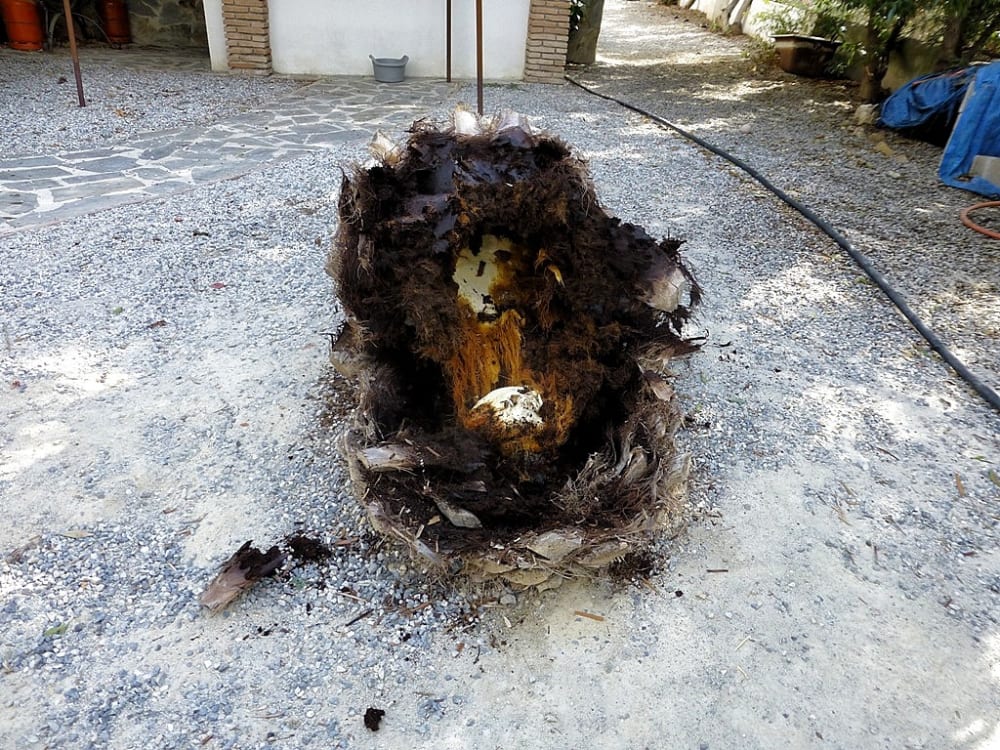
Split Palm
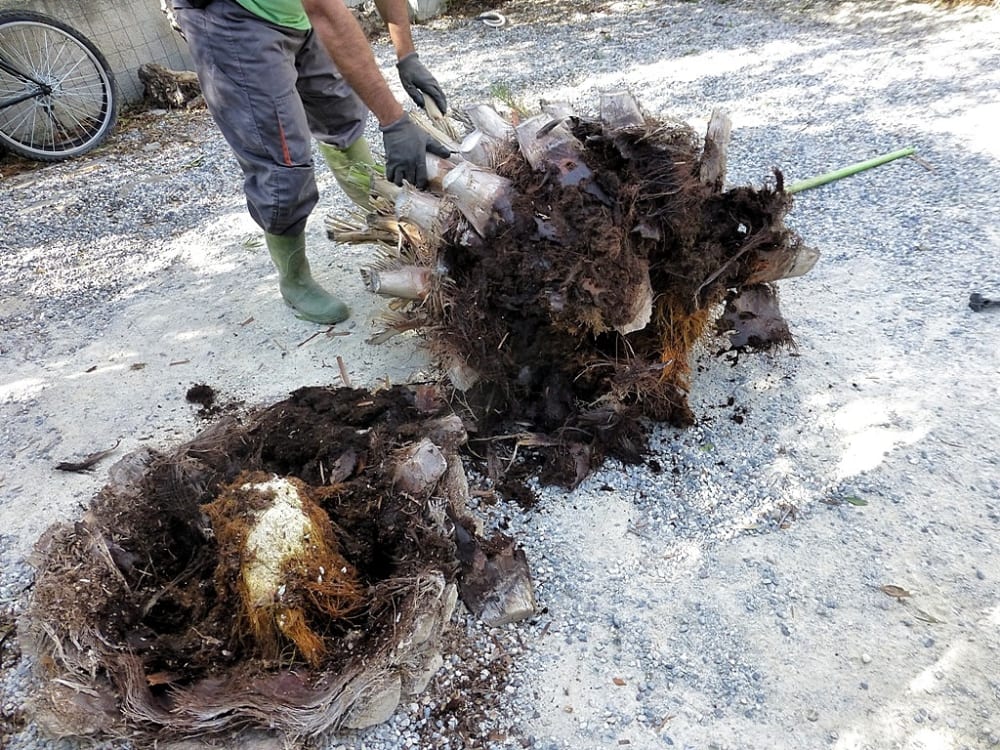
There's not a lot left
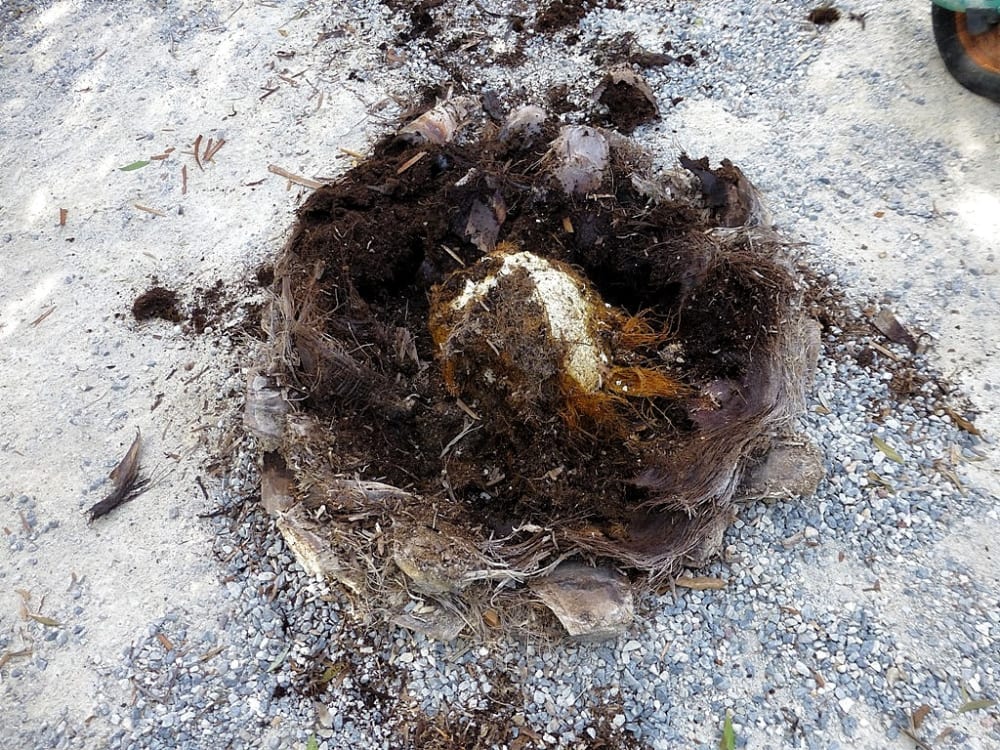
Not a lot left
The heat from inside the palm was amazing, and the stench was disgusting. There were larvae grubs everywhere but only one adult weevil found. The three of us were gagging, it was like something from a horror movie, yeah okay we are not very brave.
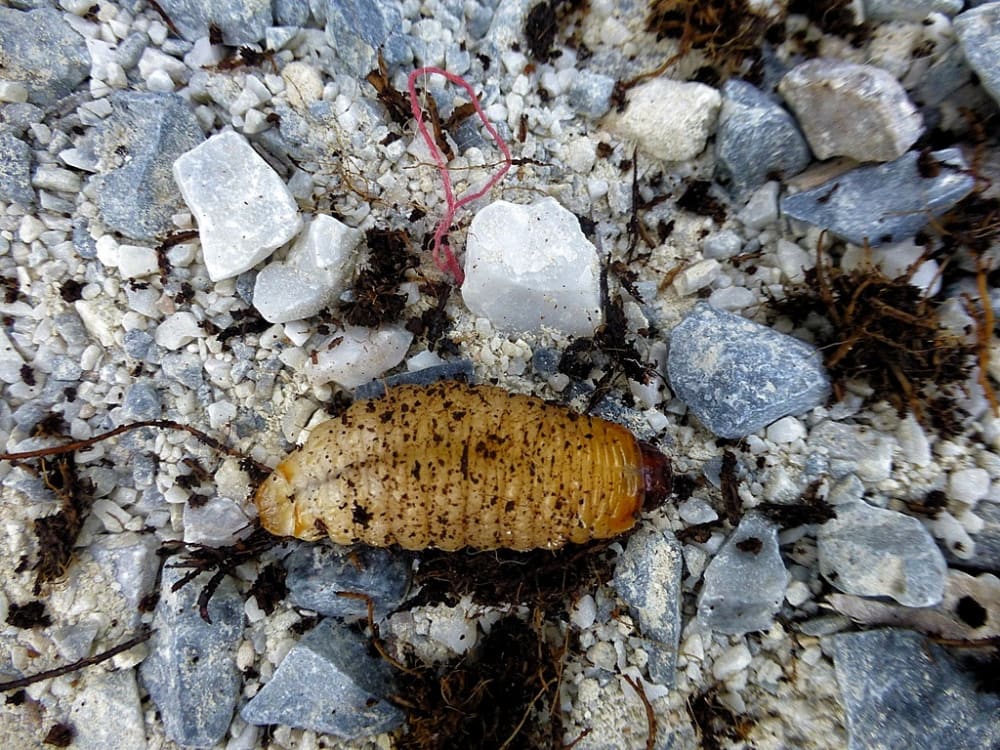
One of the many yucky larva
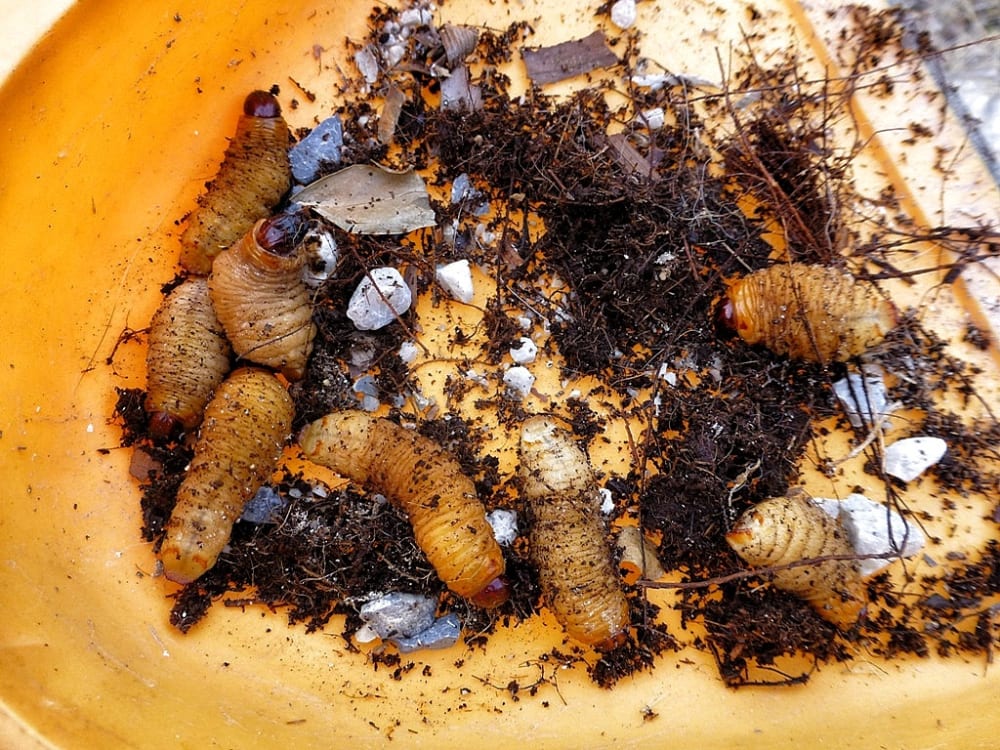
Considered a delicacy in much of Southeast Asia
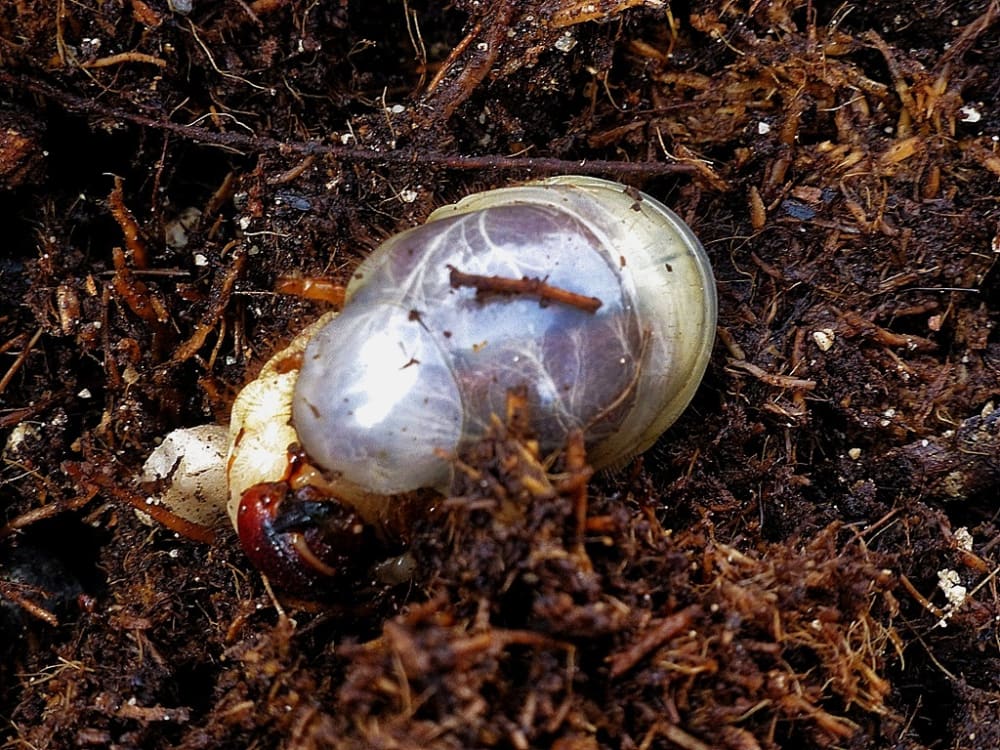
This was the most disgusting of all, an emerging pupa
A short video of today, watch if if you're brave enough!
Macro - Wasp, 2015-02-14
Someone on Facebook said "I think you should be selling your photos, not giving them to FB". While I am not sure about selling them, it got me to thinking, yes why am I giving my photos to Facebook when I have a perfectly good blog here that I have neglected for quite sometime. So now I shall be putting my photos, that would normally go on Facebook, to my blog, usually once a day, but at least on here I will be able to put more photos on at a time.
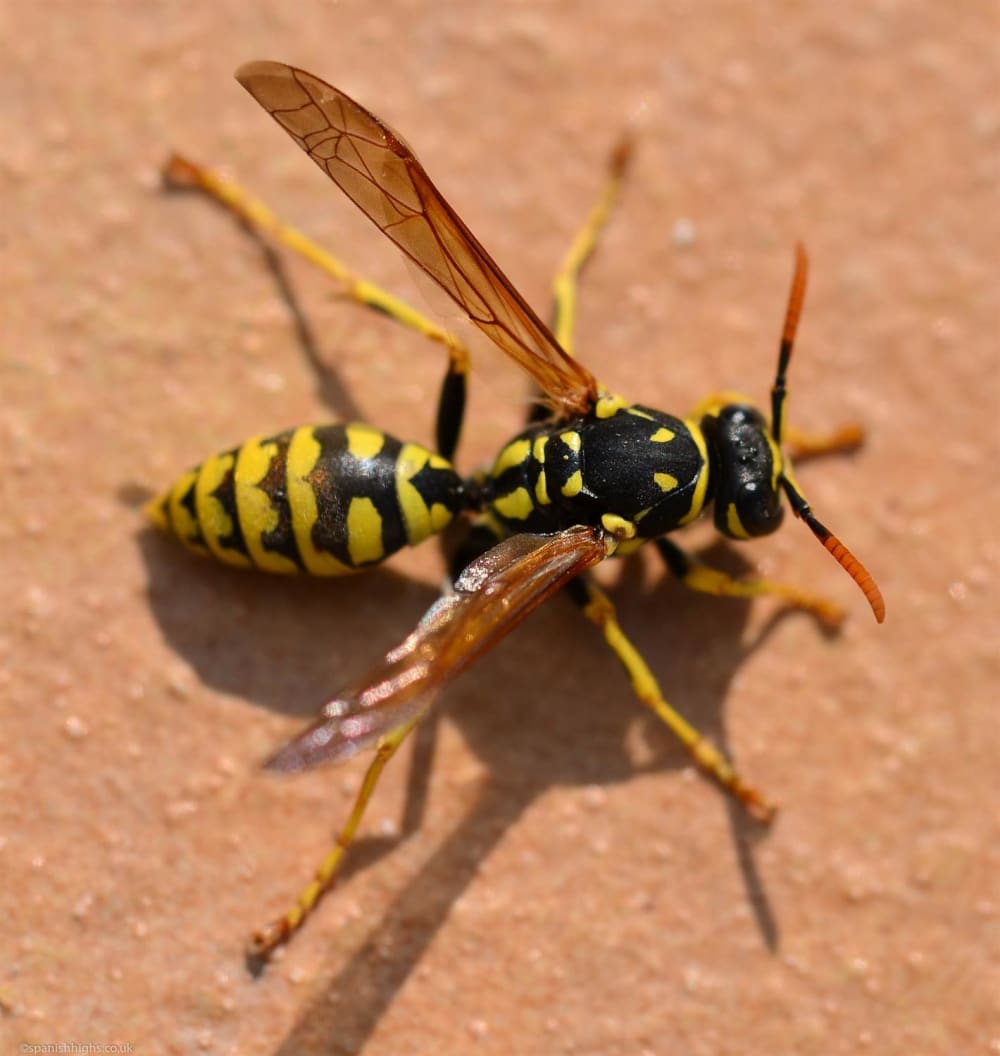
The top view of a wasp, look how delicate his wings are
So I recently came into possession of a macro lens (thanks Steve Jones for the recommendation, do go take a look at Steve's photography it's stunning), which I adore. I love getting up close and seeing a completely different world. Today's post is of a wasp! Yes I know to some not the most exciting of insects and often one that we wave our arms about at trying to swat. Take a look at these photos did you even know they looked like this?
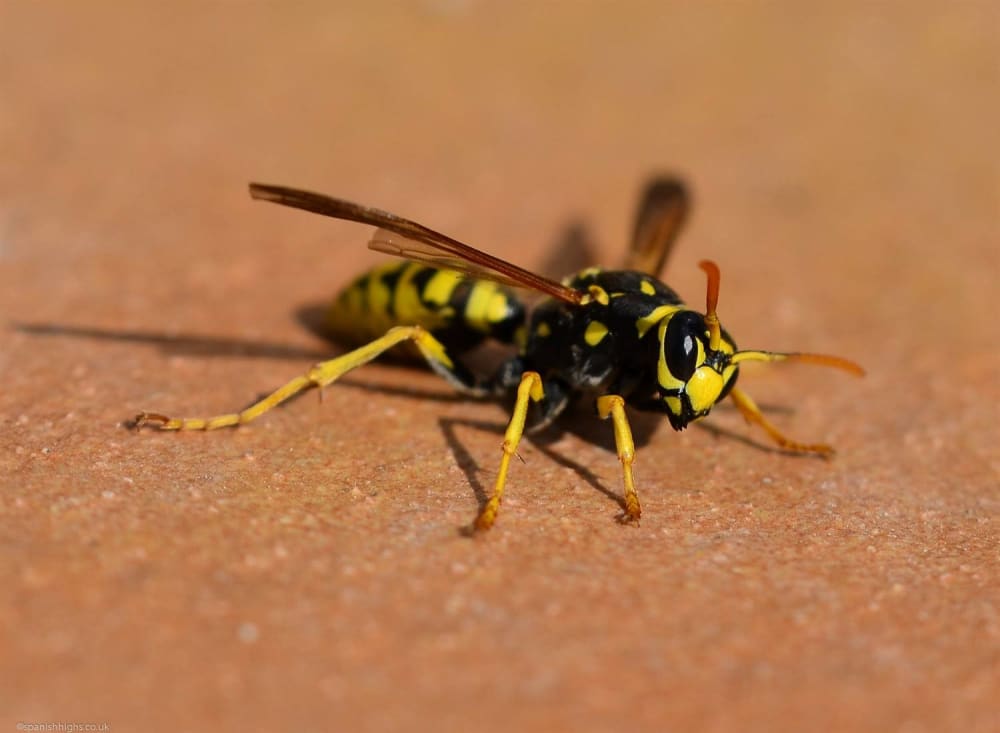
This one I just like because he/she tilted the head to have a look at what I was upto
I am still learning the art of macro, Okay not just macro but photography in general, it's a minefield and it blows my head up sometimes. Focusing, aperture, depth of field, metering, light, the need of a tripod for most shots (which I haven't used yet because most of the time I'm laying in the mud), the sensitivity to the slightest movement of the lens, just breathing will put the focus out.
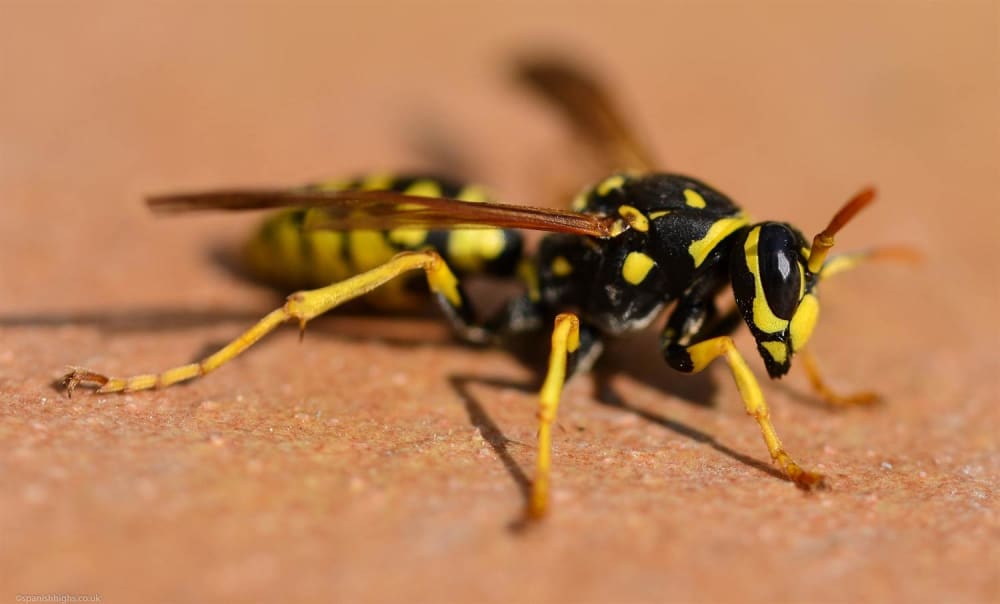
A side view. No idea why only 2 areas are in focus - three if you include the back foot!
I hope you will enjoy seeing if, and how, I progress. You can click on any of the pictures to get a bigger shot and you can also check out my photos on Smugmug these are usually at higher quality. If you know what type of wasp this is please let me know.
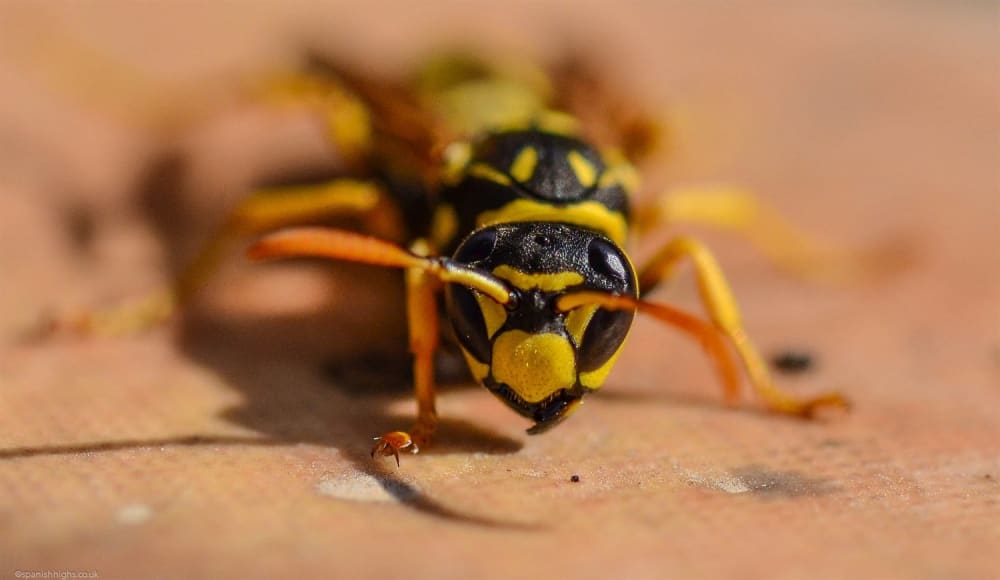
This head on shot is highly cropped. He kept moving so the focusing is not great. But hey does he have a mean mouth. Yikes
Comments
Mark: Great pictures.I love macro photography, insects especially,
Rex Jarvis: A decent macro is on my shopping list. Playing with reverse lens macro at the moment.
Macro - February wild flowers, 2015-02-23
A selection of macro shots I took during February 2015
My website has had an overhaul, I hope you like it and if there are any problems do let me know. I will no doubt be adding more stuff to it over time, especially to the galleries. Today's post is of some more macro photos but this time of flowers. They are not perfect but I like them. I have named the flowers but if you see I have labelled one incorrect please do tell me so I can correct it.
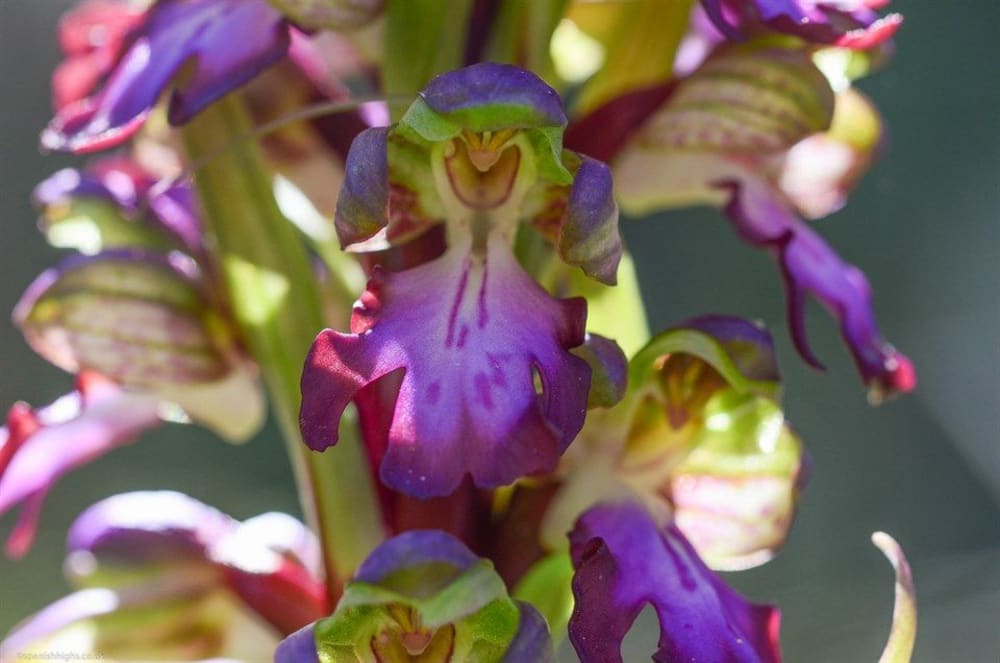
Giant orchid - Himantoglossum robertianum
These are all wild flowers that I see daily (when they are in flower) during my dog walk and in and around the campo of my home. The first three pictures are of the first Orchids to show themselves this year.
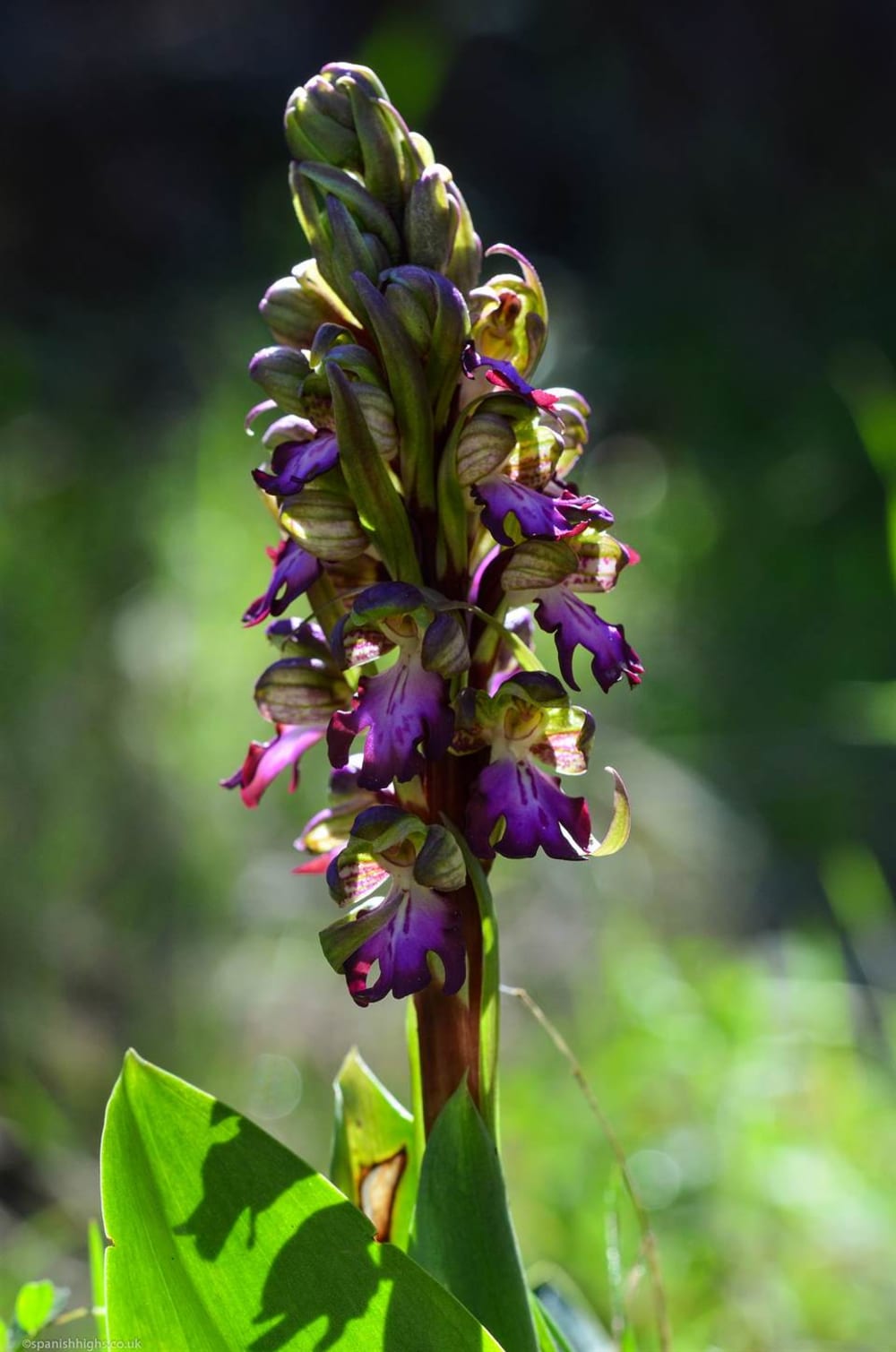
Giant orchid - Himantoglossum robertianum
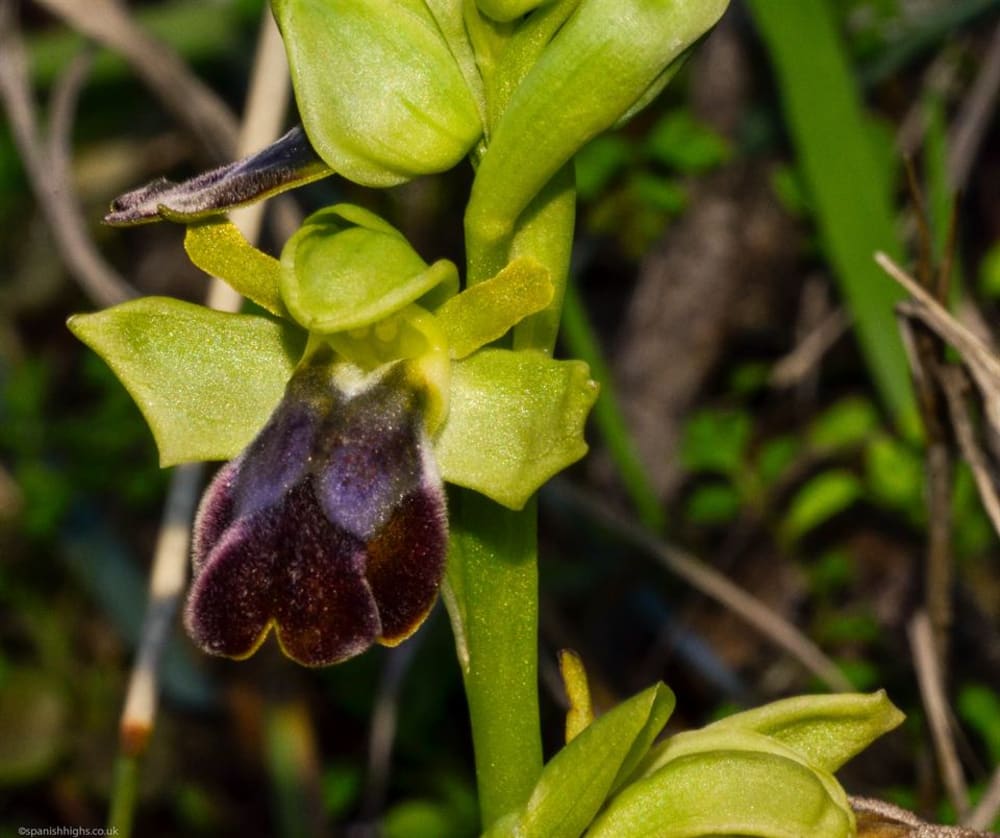
Sombre Bee-orchid - Ophrys fusca
Everyone loves almond blossom, I am sure you will see plenty of photos as I try to get the "one shot" I am after.
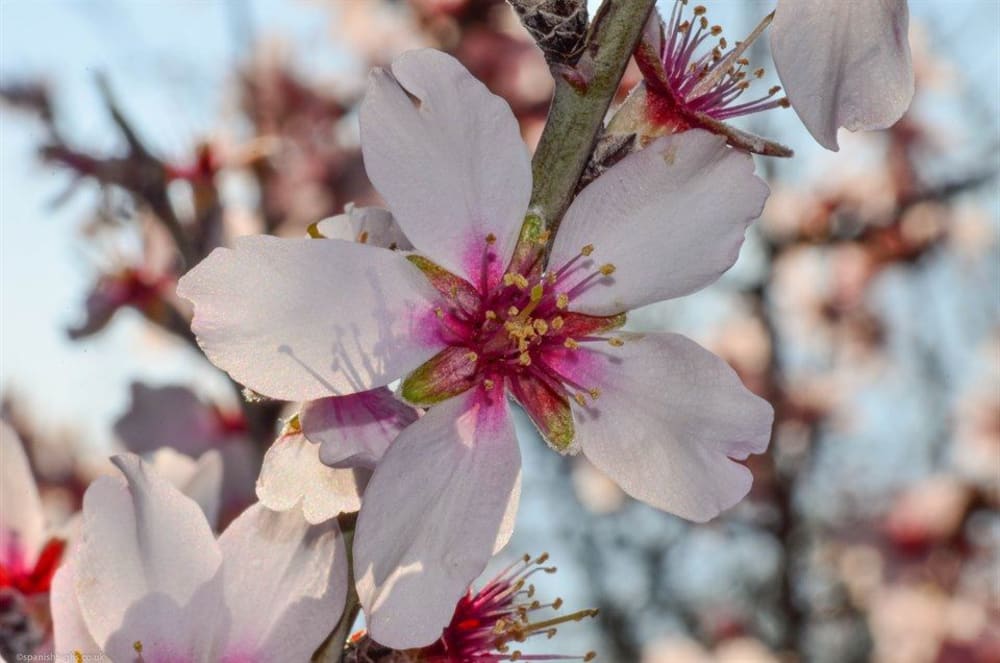
Almond blossom
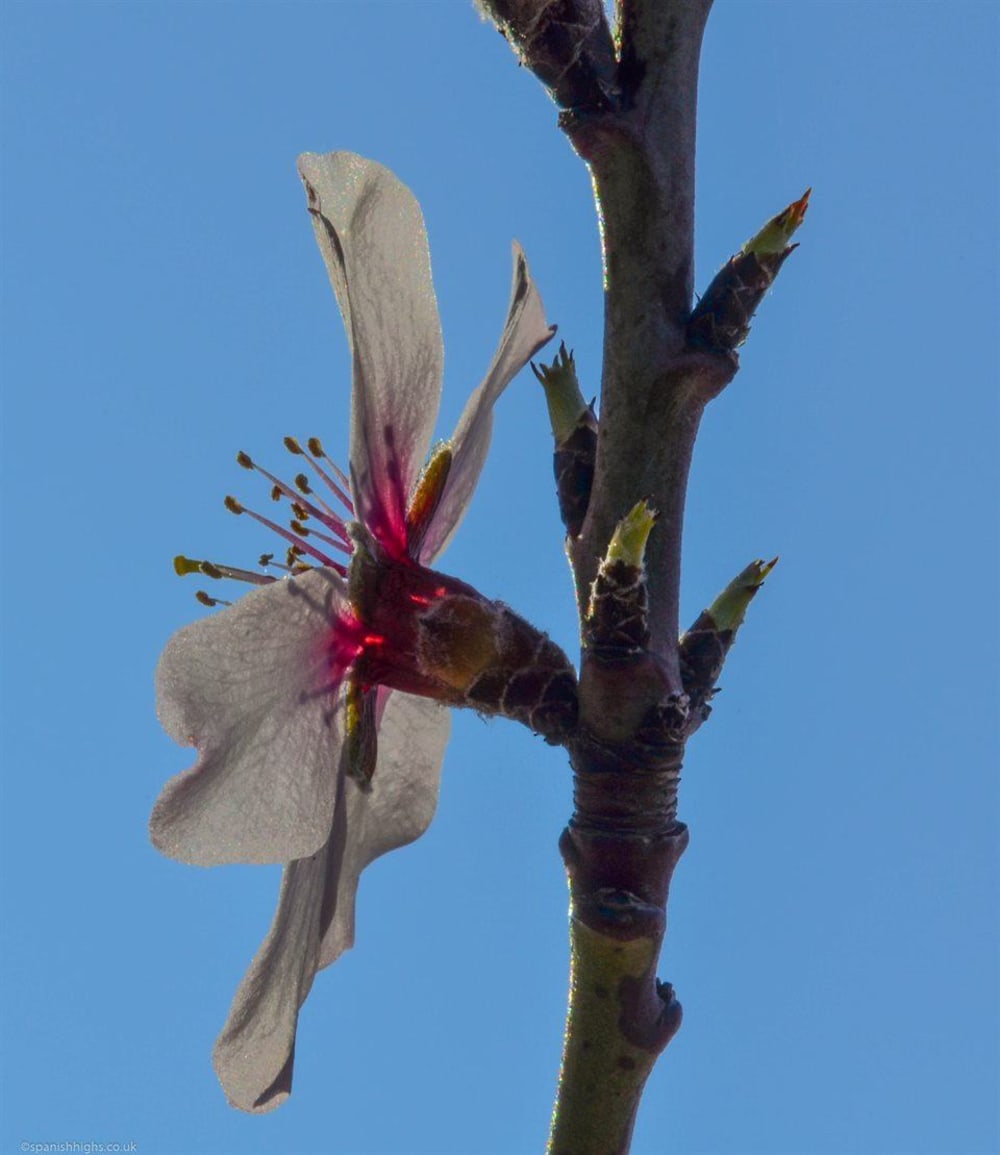
Almond blossom
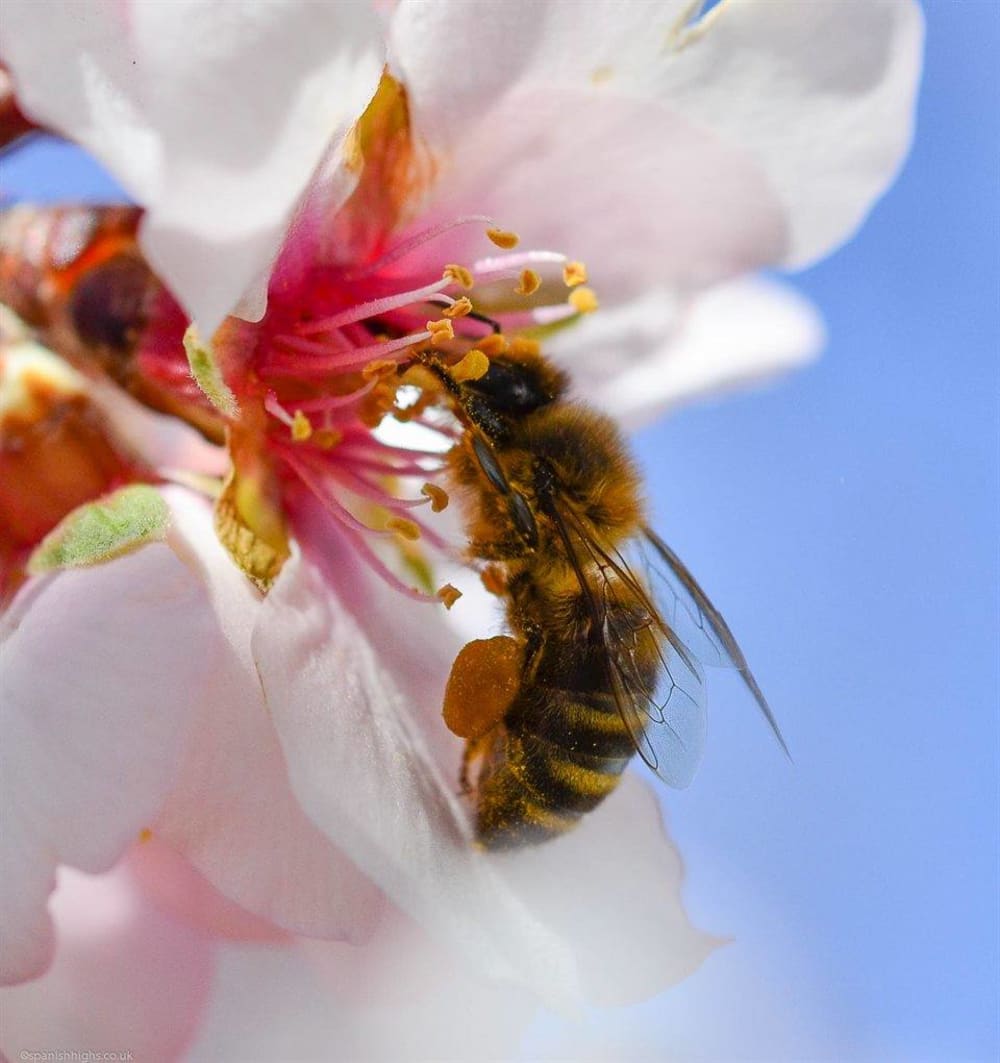
Bee on Almond blossom
This has to be one of my favourite flowers. The Bermunda buttercup only opens up when the sun is on it. They make such great subjects. The first photo was from the dog walk, then I went back a while later, the sun was fully on them and they were open as in the second photo.
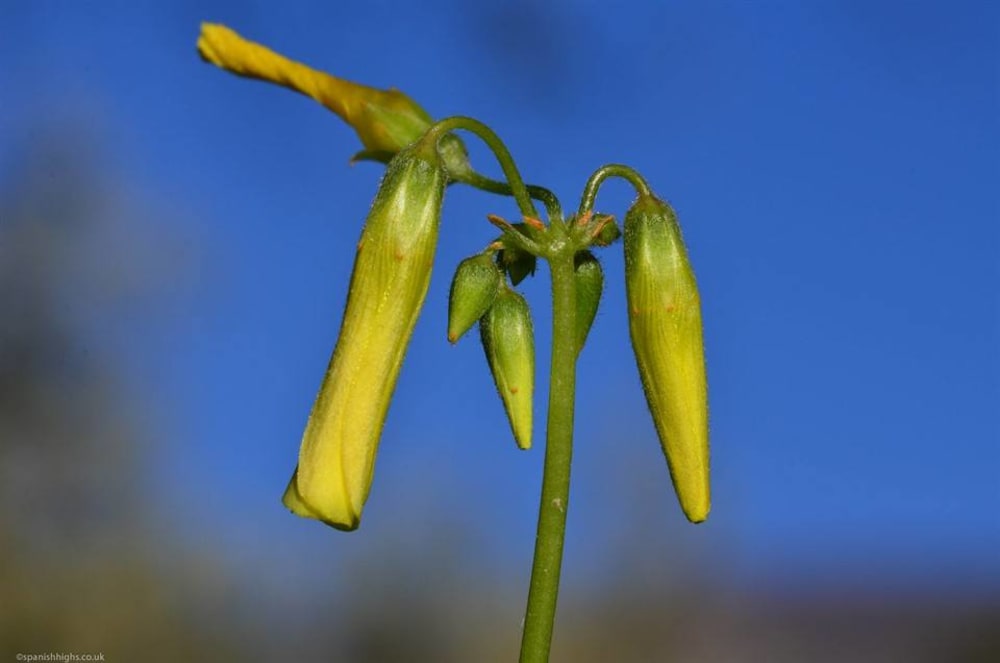
Bermuda buttercup
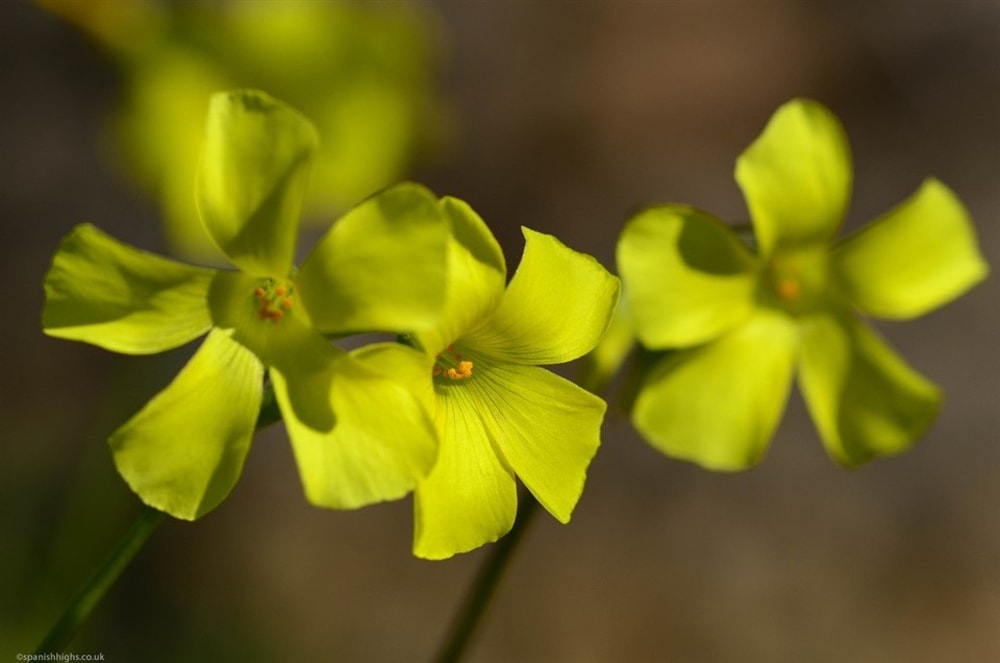
Bermuda buttercup
These are tiny blue flowers that I often end up laying in mud or dew to try and get a shot of these.
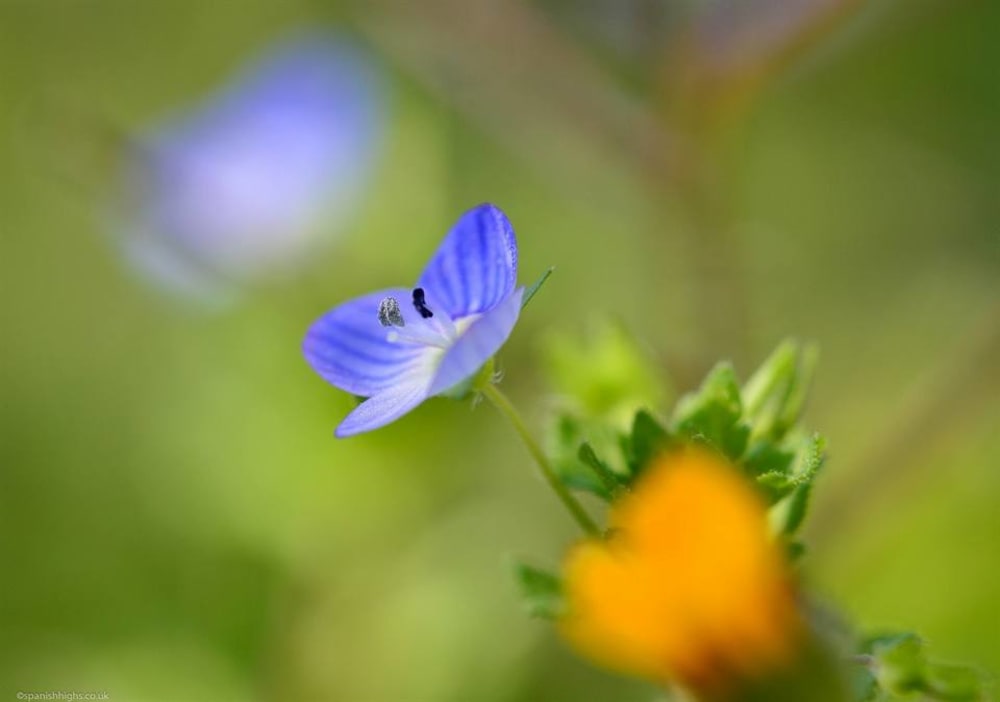
Common field-speedwell - Veronica persica
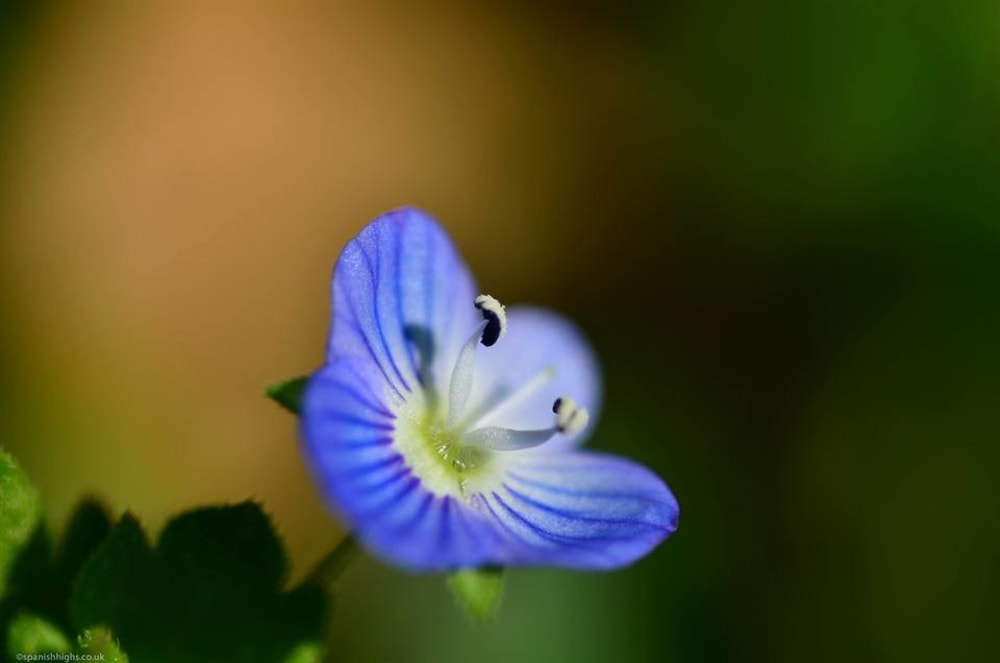
Common field-speedwell - Veronica persica
With the Purple deadnettle, they are also tiny so once again you will find me on the floor!
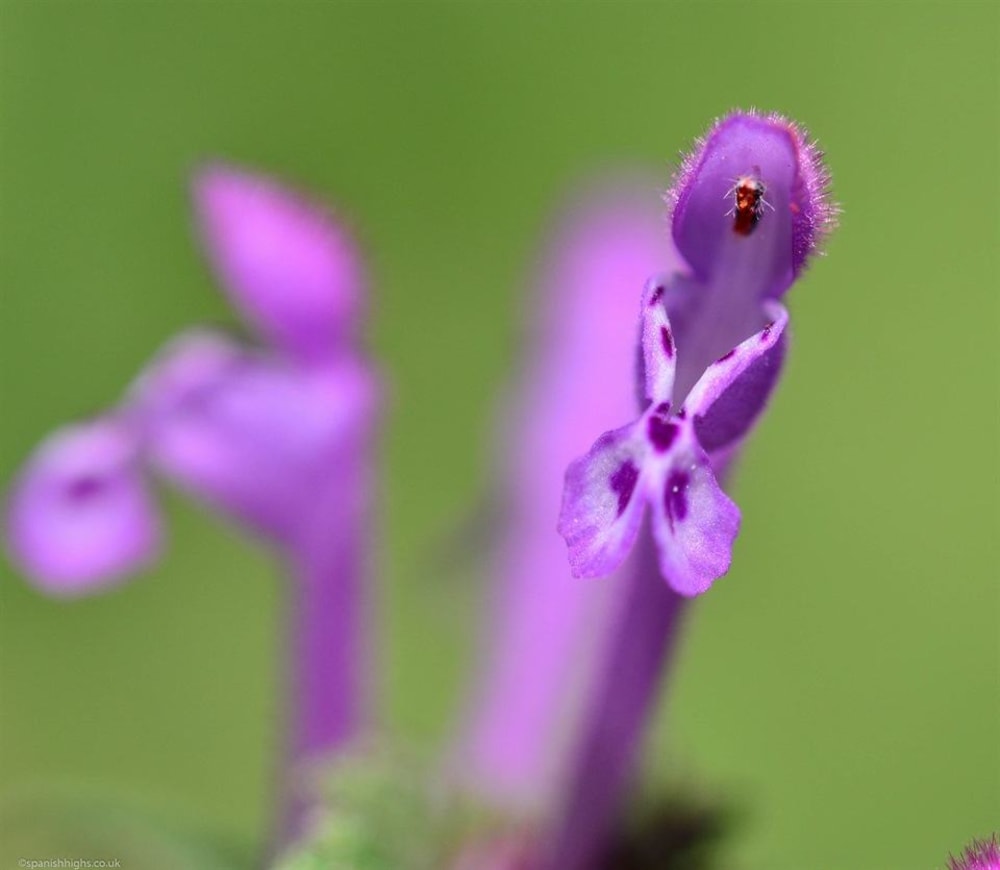
Purple deadnettle - Lamium purpureum
The Caper flower speaks for it'self, it is beautiful.
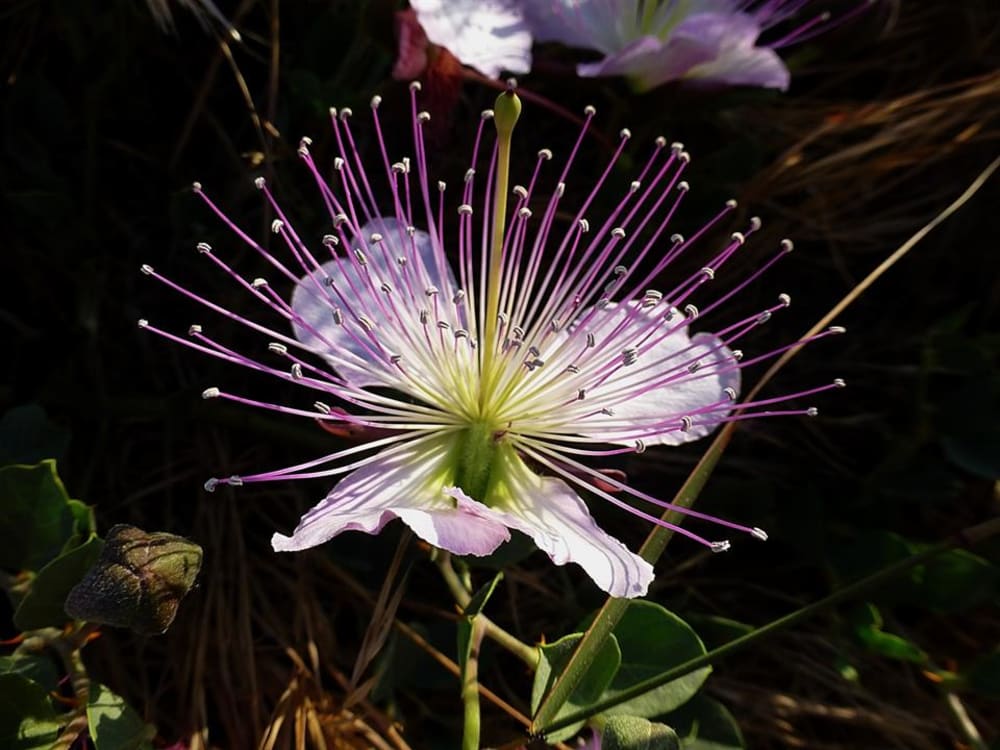
Caper flower -Capparis ovata
These Narcissus have such a wonderful smell.
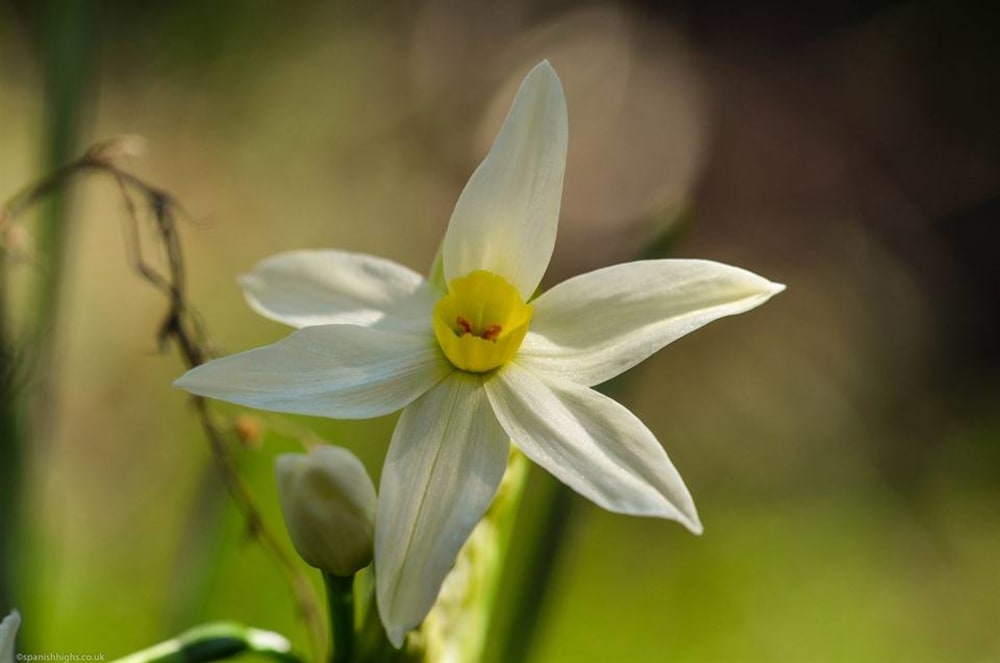
Paperwhite narcissi -Narcissus papyraceus
Again another yellow flower but it takes such a good photo.
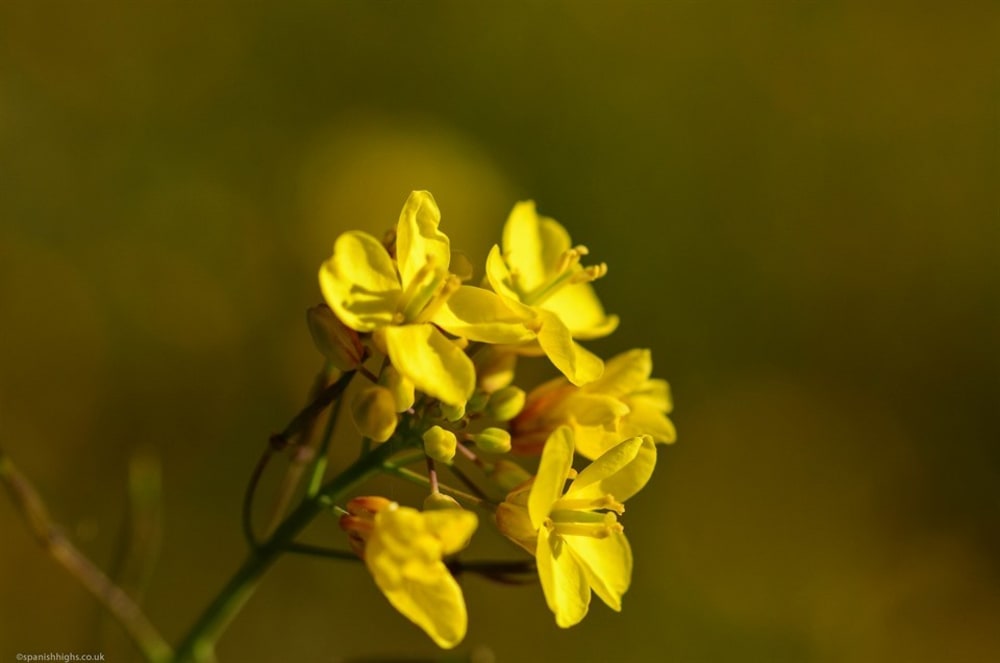
Field mustard - Sinapis arvensis
Comments
jose: Is the Paperwhite narcissi a wild flower from the Alpujarras?
Kiersten Rowland: Hi Jose According to Wikipedia the plant is native to the Western Mediterranean region from Portugal to Greece.
What night time visitors do we get in the garden?, 2015-04-09
Have you ever wondered what night time visitors you get in your garden? Well I did, I know we have them, they leave evidence behind, some more so than others! So I set up a camera trap that I'm lucky to have and hope never to have stolen.

The original idea of having the camera trap was to locate where my Booted Eagle was nesting and attach it near there (obviously before nesting season so as not to disturb them), but that is still work in progress. In the meantime to learn how to use this I set it up in our campo, please excuse some of the dates that appear, we have not moved on twenty odd years. The biggest visitor without a doubt has been Mr Juan Jabali (Jabali = Wild Boar) or JJ for short. I knew he was visiting because of the destruction he left behind, so campocam was placed in his favourite area. As you will see he is enormous. I think it's fantastic that JJ has chosen to visit our land, mind you I wouldn't want to bump into him at night! We have put him to good use, he helps to rotivate the land, we water an area, he will rotivate it for us.
They can do quite a bit of damage but they are looking for easy soil to root through. Generally they are not after the vegetables, but grubs and roots that are below the soil, just sometimes they dig up the veggies because the soil they have been planted in is soft. The soil in our area can turn to concrete very quickly, especially during the summer, so nicely watered vegetable plots are an easy visit. I had to stop posting about Juan because local people saw the posts and wanted to shoot him! He has safe passage on our land.
A number of foxes have made their way through the land. This pair I named Mr and Mrs Scratty, the reason why you will see in the video.
Recently a wild boar has been visiting again, I was keen to find out if it was JJ or another. I placed campocam in a different part of the campo to see if we could capture him/her. Unfortunately he has not been back since, but campocam did capture two very exciting creatures which I have never seen before. First up was a Genet which has been visiting almost daily in the early hours. If you have not heard of a Genet before it is closely related to Mongoose. They are mostly nocturnal, have extremely long tails, are very agile and opportunistic feeders. They mostly prefer small mammals, but will eat birds, bird eggs, scorpions, centipedes, figs and olives! It is a disaster if one should ever get into a chicken coop. The locals here generally do not like them because of the carnage they can cause with chickens. Well me, I think once again it's fantastic that these animals are living so close to us. If you don't want your chickens eaten, then make your chicken pen Genet proof.
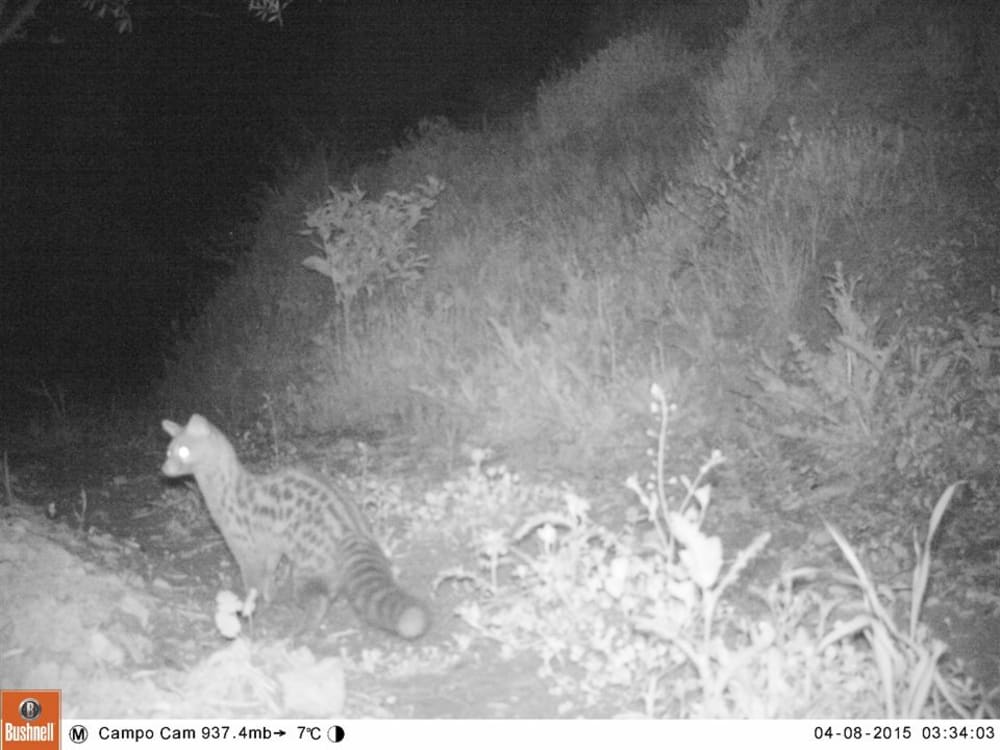
Genet
The final night time visitor so far has been a fantastic Beech (or Stone) Marten. I had to get this identification from The very helpful Iberian Nature Forum as I had no idea what it was. Again mostly a nocturnal animal, more of a plant eater than the Genet, but will plunder birds nests and take smaller birds. My biggest fail has been trying to capture a European Eagle Owl which comes at certain times of the year and uses our TV areal as a convenient perch. I have yet to find a substantial pole to attach campocam to that can withstand the wind, movement and weight of the camera trap. Hopefully by next season I will have come up with a better idea. A few cats and rats have also been roaming around. Daytime visitors are mostly birds, I will try and put a nice video together of the different species and what they get up to. There are plenty of snakes around and I would love to get one of these on video.

Stone Marten
I find it fascinating that these animals share our lives, but we very rarely see them. Campocam has done a great job.
Comments
david: Fantastic post Kiersten.I like it very much and very glad you have already achieved to capture Genet and beech marten. Try to entice them with sardines and you will check the excellent results (if there are cats around, provide a few fishes more :) )...
david: Sorry, I had forgotten to say that.If you have a look on my flickr account you could see so many birds I 've captured with my scouting camera so far. The address is as follow: https://www.flicker.com/photos/94137302@N08/

